Everywhere you look at the moment lure fishing seems to be exploding in popularity. The exciting thing is that this boom isn’t confined to the old dogs – there’s a whole army of younger generation coming into angling through lures.

At the same time, fishing with artificial lures of one kind or another is incredibly ancient – so it’s not as if this style only just got invented. However, there are a few cool things coming together at this time that might just have kick-started a rise in popularity.
Our Lure Content Hub contains a selection of articles & Videos covering some of the wide range of experiences available to the lure angler.
Before looking at some techniques that you might find interesting and useful, here's a table of contents so you can click on any heading below and go right to the sections that interest you:
Lure Fishing on YouTube
A big, big part of increased popularity is likely to be due to anglers finding YouTubers that they identify with – and seeing them go out and have great days of sport with a roving, mobile approach. As well as the fishing action – there is also a lot of really cool gear, lures and tactics being showcased in online video content all the time.
Lure fishing isn’t just confined to remote, countryside waters either– urban lure fishing is huge too. It includes ponds, lakes, canals and rivers. In fact, pretty much anywhere that is wet and might just hold a fish or two – you could find a lure angler. For instance, the popularity of the many street fishing contests has been captured in the Fox Rage Street Fighters series:
Probably another big factor in the exploding popularity, which you also see through YouTube, is the extensive and rapid trickle-down of battle-tested tactics, lures and rigs from the big money/high-budget Pro lure-fishing tournaments. When it became obvious that the tactics developed for bass tournaments in the USA worked just as well for a range of species all around the world – then global “hobby” lure angling took a big leap forward.
It’s all a long way from chucking a Mepps spinner down and across the current and mindlessly winding it back…
Whether you enjoy the super-technical performance-boosts from Tactical Bassin’; the chilled out life-affirming exploits of the NDYakAngler; urban/bike-and-train-based and self-deprecating perch hunting with Perch Jesus, throwing big swimbaits with DB Fishing – or even the cry of “HHHHWWWONE-DAY!!” as Marling Baits gets to work on another 1-day build-to-catch episode – there’s cool stuff waiting for you on YouTube.
That’s not even touching on saltwater lure fishing. Again, on YouTube you’ll find saltwater lure fishing for for micro species, species-hunting (where you tick as many species as possible), Light Rock Fishing, Heavy Rock Fishing with venues and species from around the globe. Plus there’s the boom in BFS (Bait Finesse System) fishing in both cold-water/trout and warm-water predator (perch, bass, crappie, snakehead etc.) venues.
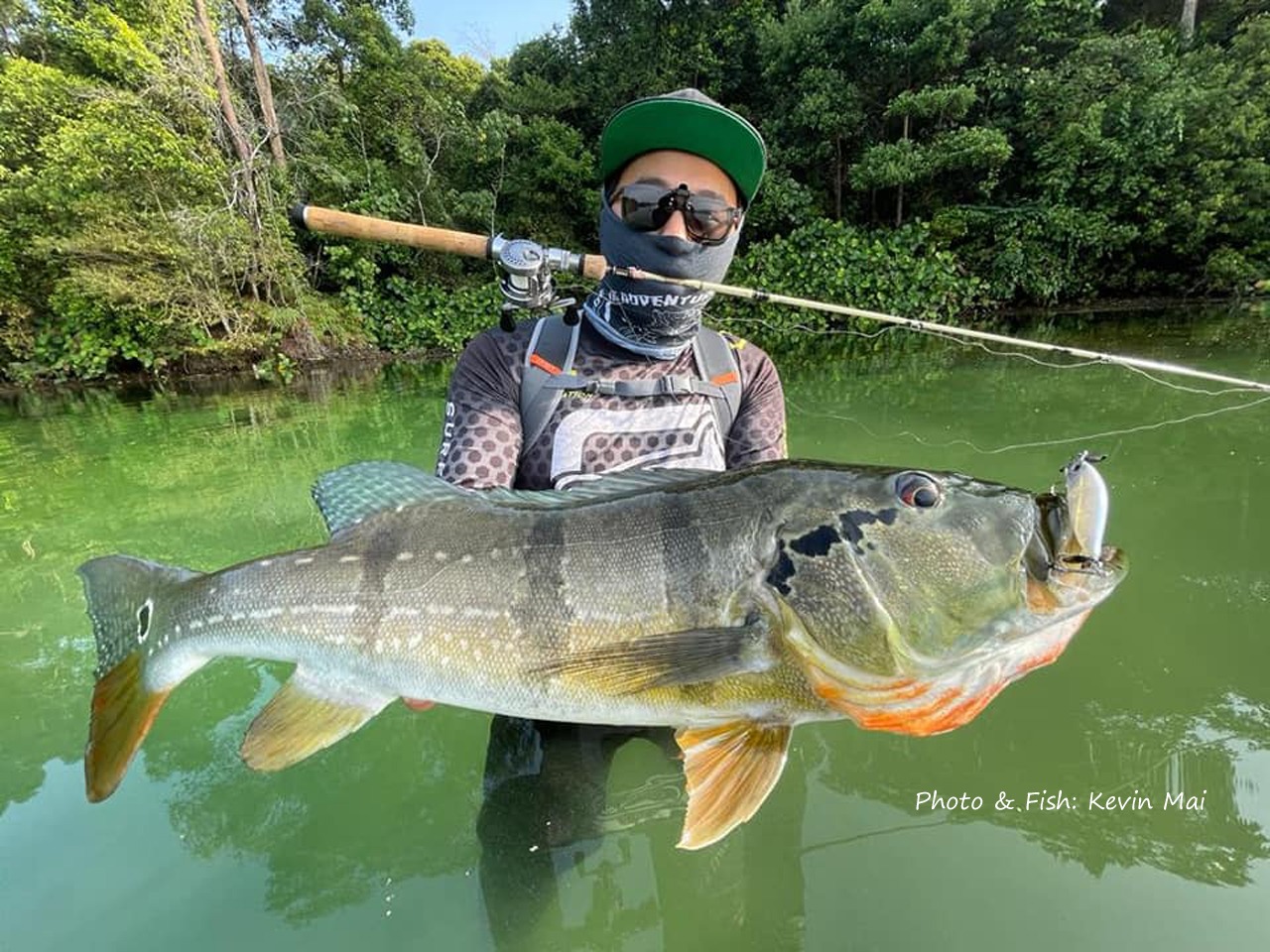
...Spoiled for choice you might say!
Because of the diversity of locations and YouTubers themselves – you’ve a great chance of finding a method and a presenter that click with you.
That includes a much younger audience – particularly for urban lure fishing - than most other styles of angling I can think of.
Here I’ll do my best to give a good run-down for anyone wanting to give modern lure fishing a go.
The Basic Idea of Lure Fishing
This might sound stupid, but I think it’s really important to understand what we’re trying to do here. Namely:
We want to present an artificial “bait” (i.e. lure) to a fish AT THE DEPTH THAT FISH IS HUNTING and to have that lure look and move in a way that triggers a predatory strike..
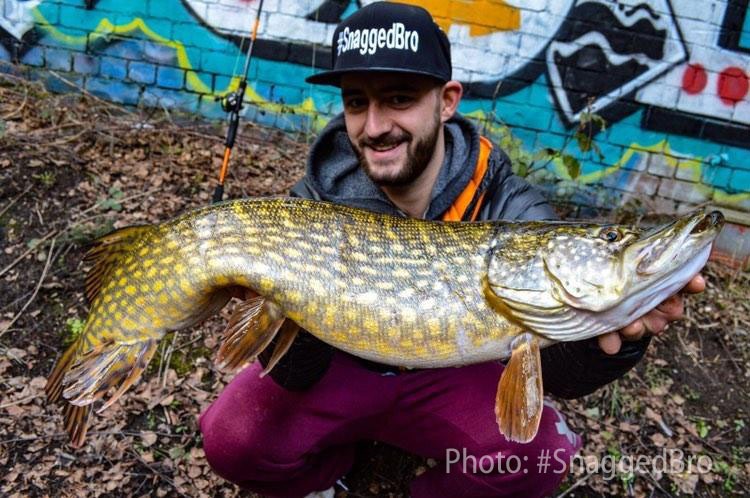
Sean from Snagged Bro with another gorgeous lure-caught urban pike (insta: @sean_snaggedbro)
The layers of the water that predators hunt in vary with species and conditions (particularly temperature). Similarly, how willing a fish will be to actively chase a bait is related strongly to temperature (and to a degree, species too).
As in all fishing, the most important things to get right are:
Along with not spooking fish, location and depth are the main things that will determine success or failure...
Universal Guidelines for Fish Location
Predatory fish broadly fall into three categories of feeding tactics (and some species switch between those tactics depending on the conditions or season):
Of course there are specific examples that lie a bit outside those broad categories (e.g. largemouth bass removing “intruders” from their breeding bed sites) – but the above three situations will get you a long way down the road.
Always remember that if you can see fish (either with your own eyes or via Fish finder electronics (see below) - then that's where you should aim!
If you can't see fish but you can see baitfish activity, birds wheeling and especially surface disturbances that suggest blow-ups; then those are spots to cast at
If you can't see baitfish/prey activity or signs of predation, then you need to fish to features (which could be anything from currents that concentrate food to dying/rotting weed that will provide little bugs and grubs for the baitfish to feed on...
and then it's like "The Old Woman Who Swallowed a Fly" all over again...
Recognising features is a huge advantage and there are a handful of ideas to learn that can really help you gain that advantage. For instance, if you know you’re fishing for ambush predators; you’ll be looking for great ambush points.
These include:
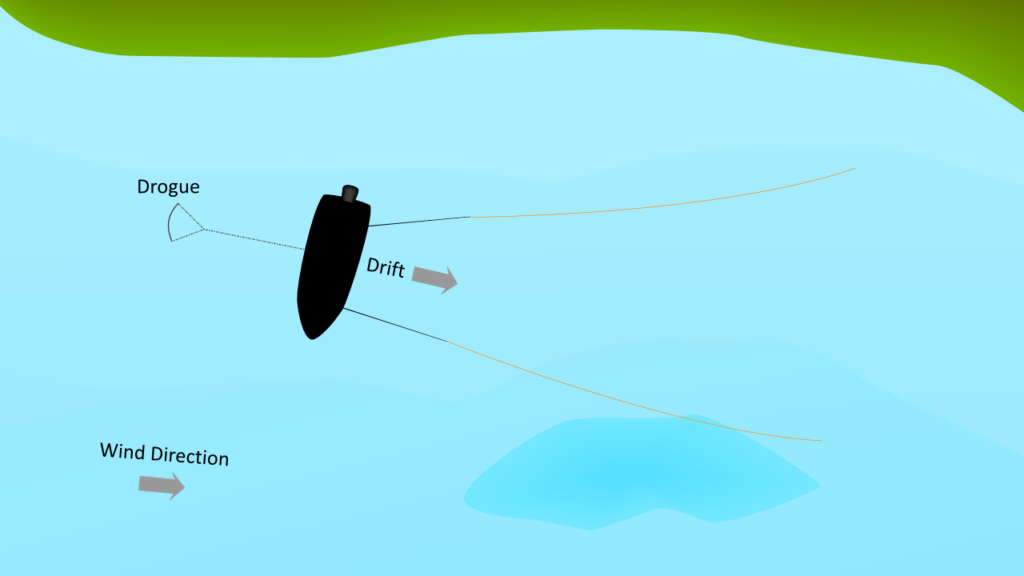
Targeting drop offs using shade of water or electronics
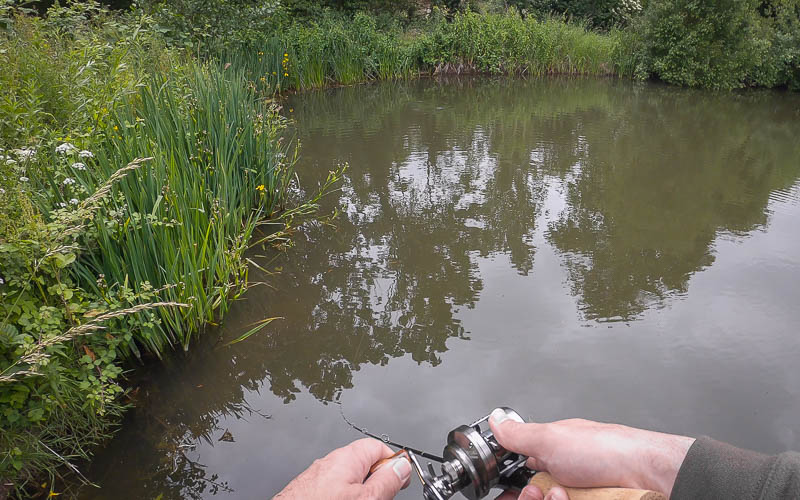
Ambushed next to marginal cover!
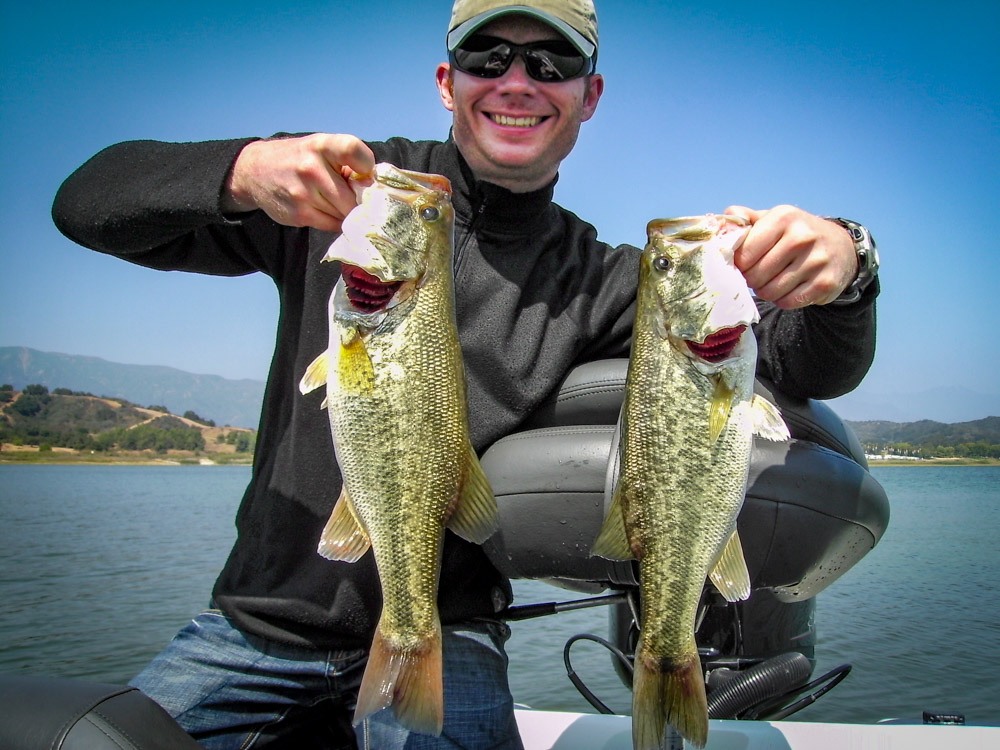
Targeting
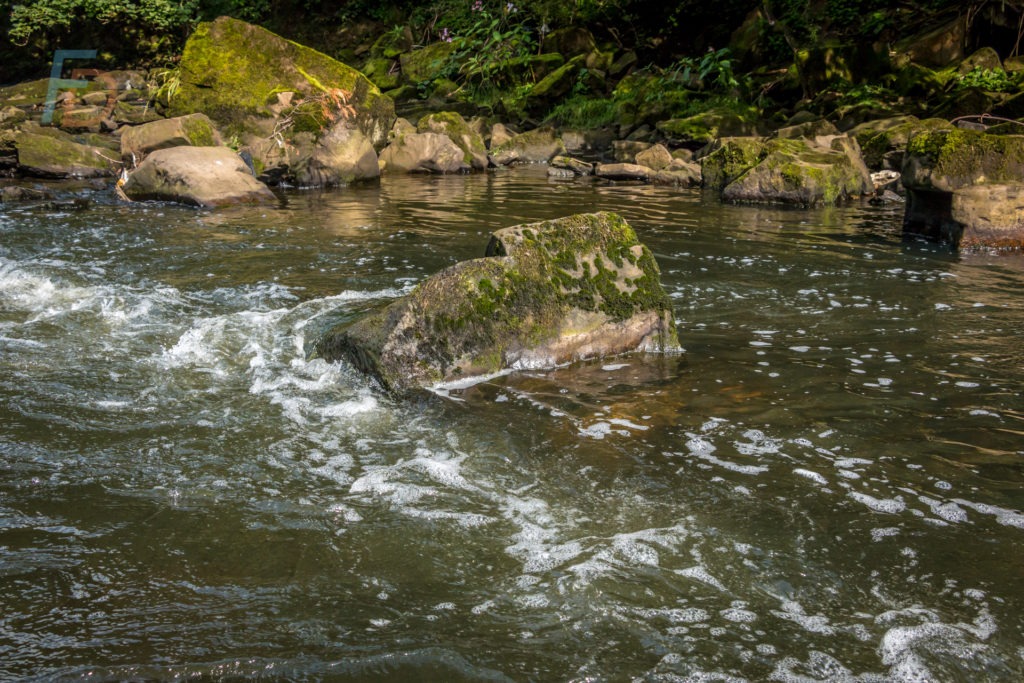
Rocks to herd baitfish against
For both the roving/herding feeders and the bottom-browsing feeding modes – anything that concentrates prey into higher densities will be the most important factors. In open water – rotating water currents can concentrate the tiny plankton that bait-fish feed on (my inner biology geek forces me to mention Langmuir Vortices at this point...).
In open water – these rotating columns of water can create hot-spots of nutrients, small prey and bait-fish:
That is why the surface slicks and foam-lines produced by these currents can be important clues.
Fish Finders for Lure Fishing
Whether it is locating the drop-offs, shoals of bait-fish or even your target fish species - for certain venues fish-finder electronics could be an important part of your lure fishing gear. A highly rated example is the Lowrance HOOK2, available with three different screen sizes.
The Amazon affiliates link below pays a commission to us for purchases made (without altering the item's cost to you). It's an important way of supporting our content creation - so thank you if you do use our link.
Of course, if you'd rather prevent Amazon sending us their payment - please feel free to navigate to that item directly.
Alternatively, there are now even fish finders that hook up to your smart phone via wifi (Amazon affiliate link for the Deeper PRO+ below):
By the way, did you know you can view a current list of search results for "Fish Finders rated 4 stars and above" on Amazon by Clicking My Affiliate Link? The button below also shows you the same list:
Feeding Depth: An All-important Factor for Lure Fishing
With likely locations identified, covering the most promising feeding depth is next on the list of priorities. This is a chance to simplify your choice of baits from the bewildering range available to buy.
Working backwards from the distance you’ll need to cast will give you a ballpark of the total weight of your lure and any additional casting weight. The sink-rate (or diving depth of floating hard-baits) will let you know if you can reach the target depth.
Some sinking baits will have deliberate action built in – either whole-body fluttering in hard baits, or tail-working soft baits as the lure sinks through the water to reach the fishing depth. This means it is "fishing" through many different depths - even before the retrieve begins. Counting down that sinking phase can help identify the feeding depth - if you start getting hits at a certain point during the countdown.
Obviously, top-water baits are specifically for surface feeding fish and specialised bottom-fishing rigs are designed to get down quickly – and have the ability to be fished either statically or as part of an active retrieve along the bottom. Drop shot rigs can be set either fairly hard to the bottom or at any desired depth in the water column (but generally in the lower half to lower third).
Keeping the importance of feeding depth in mind, let’s look at some of the core types of lures
Quick (!!) Guide to Lures
As well as size, there are many other categories you can sort lures out into. Within each of those categories, you can also find examples of floating, sinking and suspension (approximately neutral buoyancy) baits. Whether they are soft or hard, bladed or swim baits; there’s a never-ending series of options.
Probably the best way to find your way through this maze is to fish with a few basic types (and to consult some of the funky rigging options that work for bass and perch).
Doing this, you may get to a point where you’re thinking “This presentation is working OK, but I wish I had a bait that did “X”…”. As soon as you catch yourself with that thought – you know you can search the market for baits that do exactly what you want.
In other words, knowing what effect you want to achieve lets you work backwards to find the bait that gives you what you need.
Here are some basic starting points:
Soft plastic Swim Baits
Very versatile and may be cheaper to replace than equivalent hard baits.
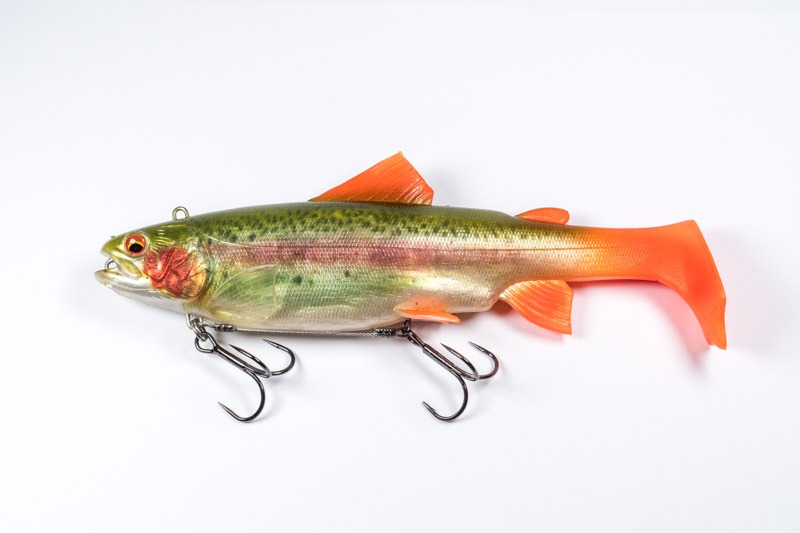
These can be fished on a jig hook, cheb weight and offset hook, cheb-weight and "stinger" single barbless hook or dead-sticked/crawled along on a drop-shot rig. You can even add them as a “trailer” on bladed or simple skirted jigs.
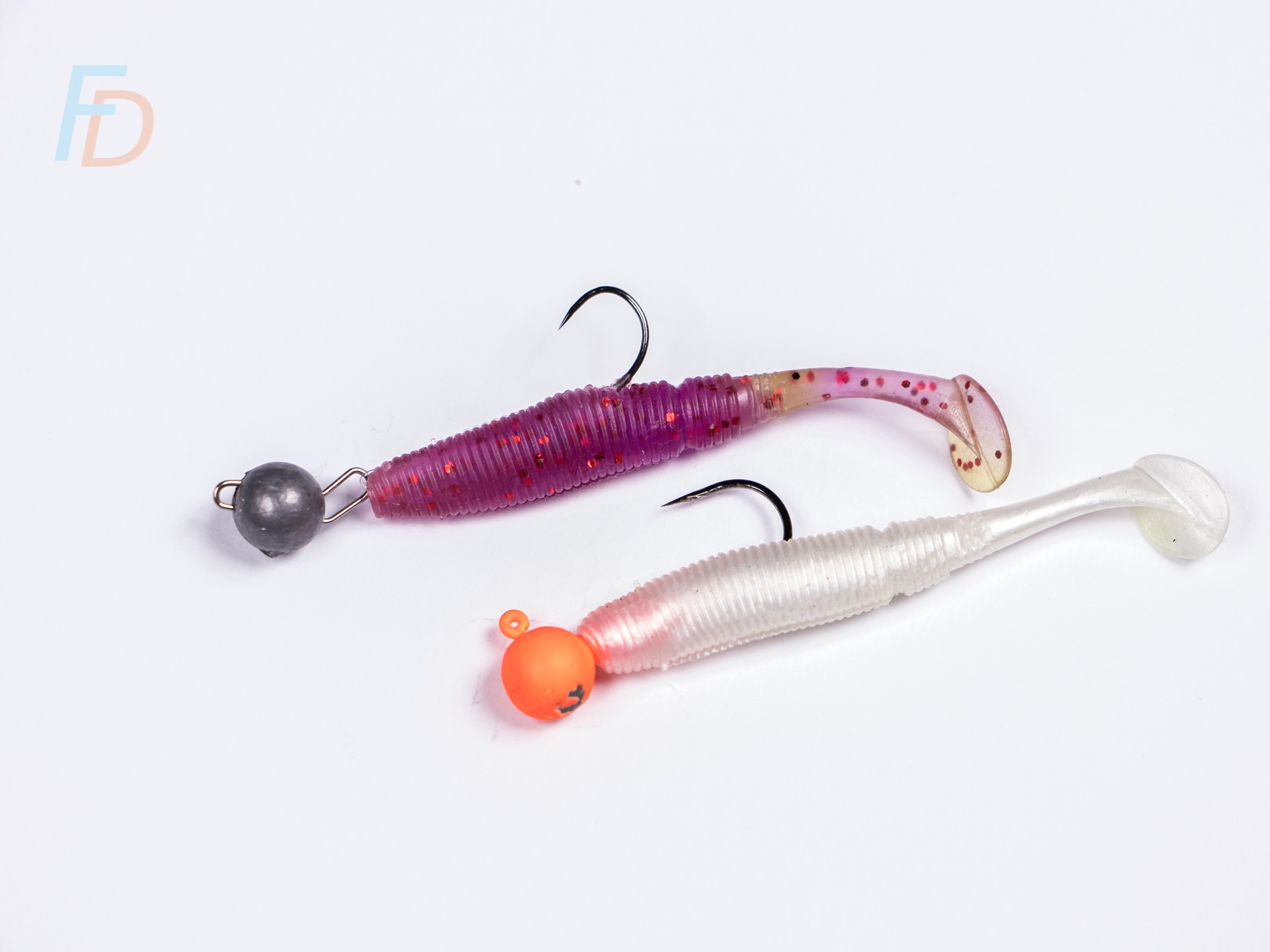
Cheb rig with flexible fluorocarbon "stinger" whipped onto barbless single hook (top) & standard jig-hook (bottom) rigging for soft plastic swimbaits BFS sizes
Then as well as the "paddle tail" lures shown so far in this section, there are also curly "grub-tail" soft plastic swim baits which (along with a tail-swimming motion) tend to have a nice body-roll action when twitched. These tails have a much more fluttery action compared to paddle-tails.
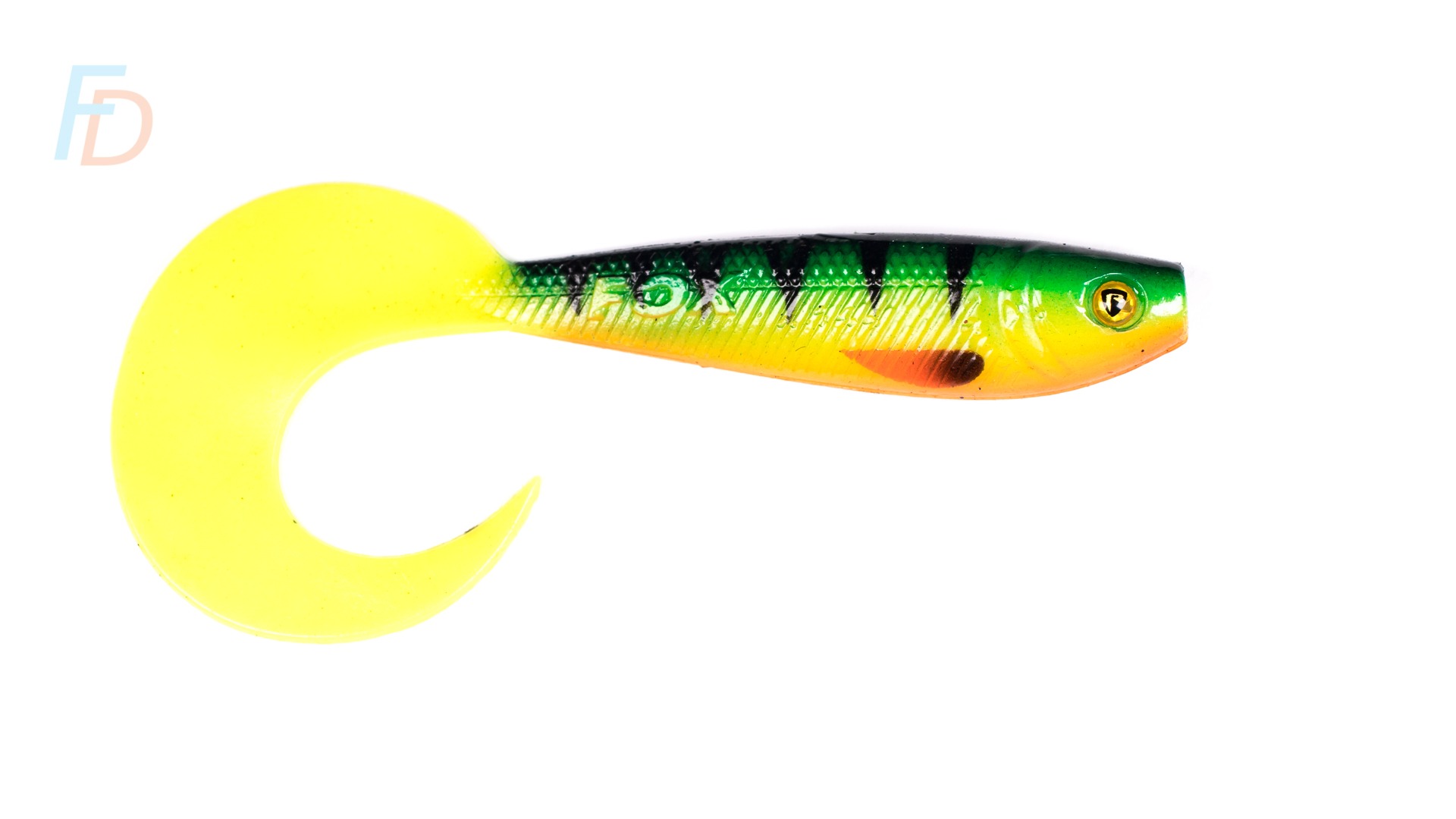
There’s a nearly endless choice of colour, action, size and shape for these baits – so try to find out what the fish in your target venue are eating and then imitate/exaggerate those prey forms with your lures.
Creature Baits (Soft) in Modern Lure Fishing
Any multi-legged bug, crawfish/crayfish or even salamander moulded soft plastic designed to be fished on the bottom would probably qualify as a creature bait. Basically, stuff that is neither a fish nor a worm imitation is very likely to be a creature bait.

Often the plastic used for these lures is buoyant – so that the bait sits straight up off the bottom when allowed to rest. Again, you can see many examples of how to rig creature baits by clicking here.
Soft Plastic worms
These can be just plain mimics of earthworms (with little to no swimming action when retrieved; but a lot of twitching and wriggling action when dead-sticked).
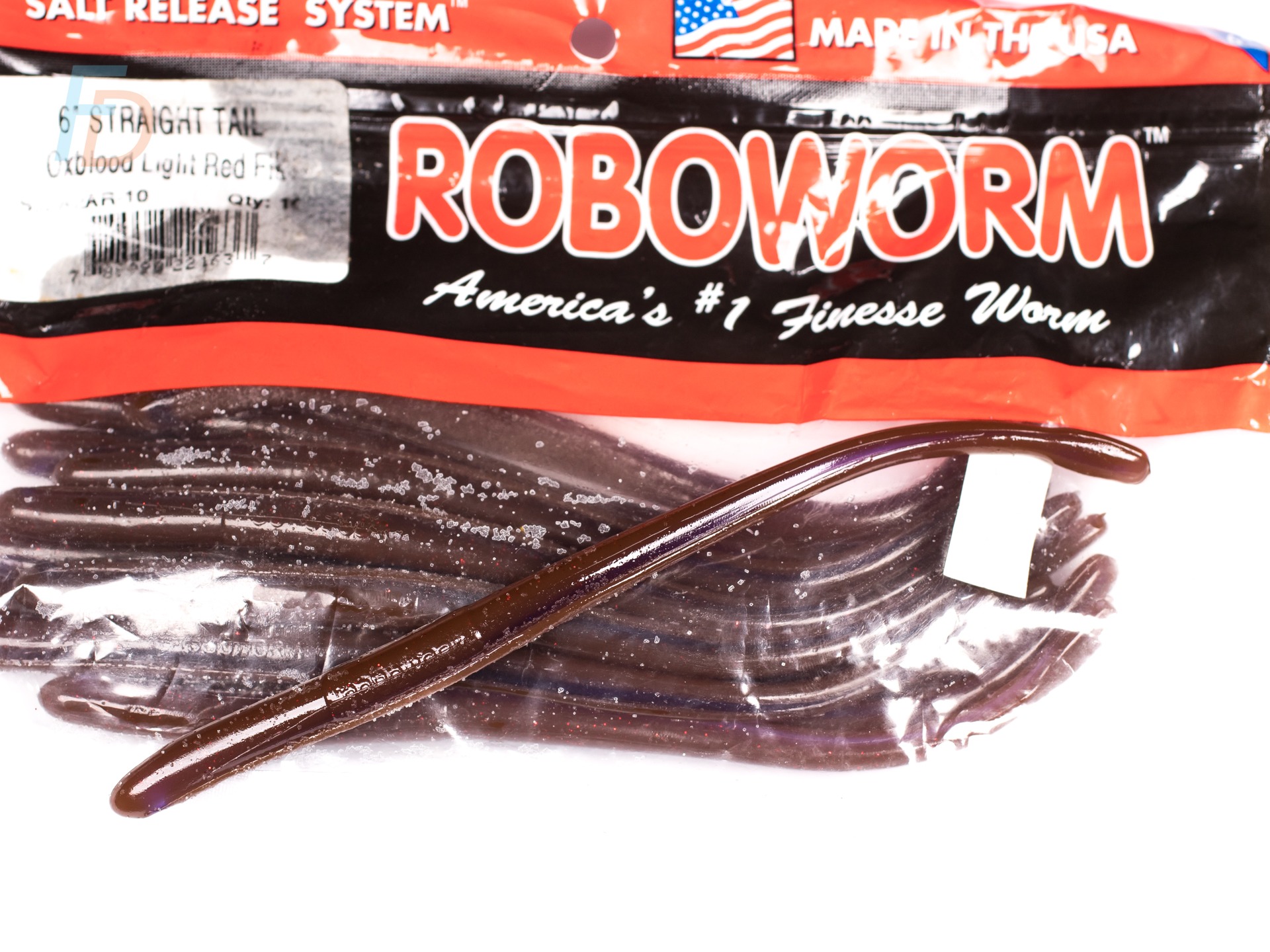
See my drop shotting article for a detailed description of dead sticking. You will also find grub tailed (or even bulbous tailed) worm baits which do have their own fluttering/swimming action when retrieved or fished on the drop. The roboworms (above) are a sinking bait (ideal for drop-shotting). In contrast, lures like the Nine Seven Tungsten "Fat Ass" worms (below) are highly buoyant and can be fished in a wide variety of ways - whether midwater or bumbled along the bottom to dead-sticked.
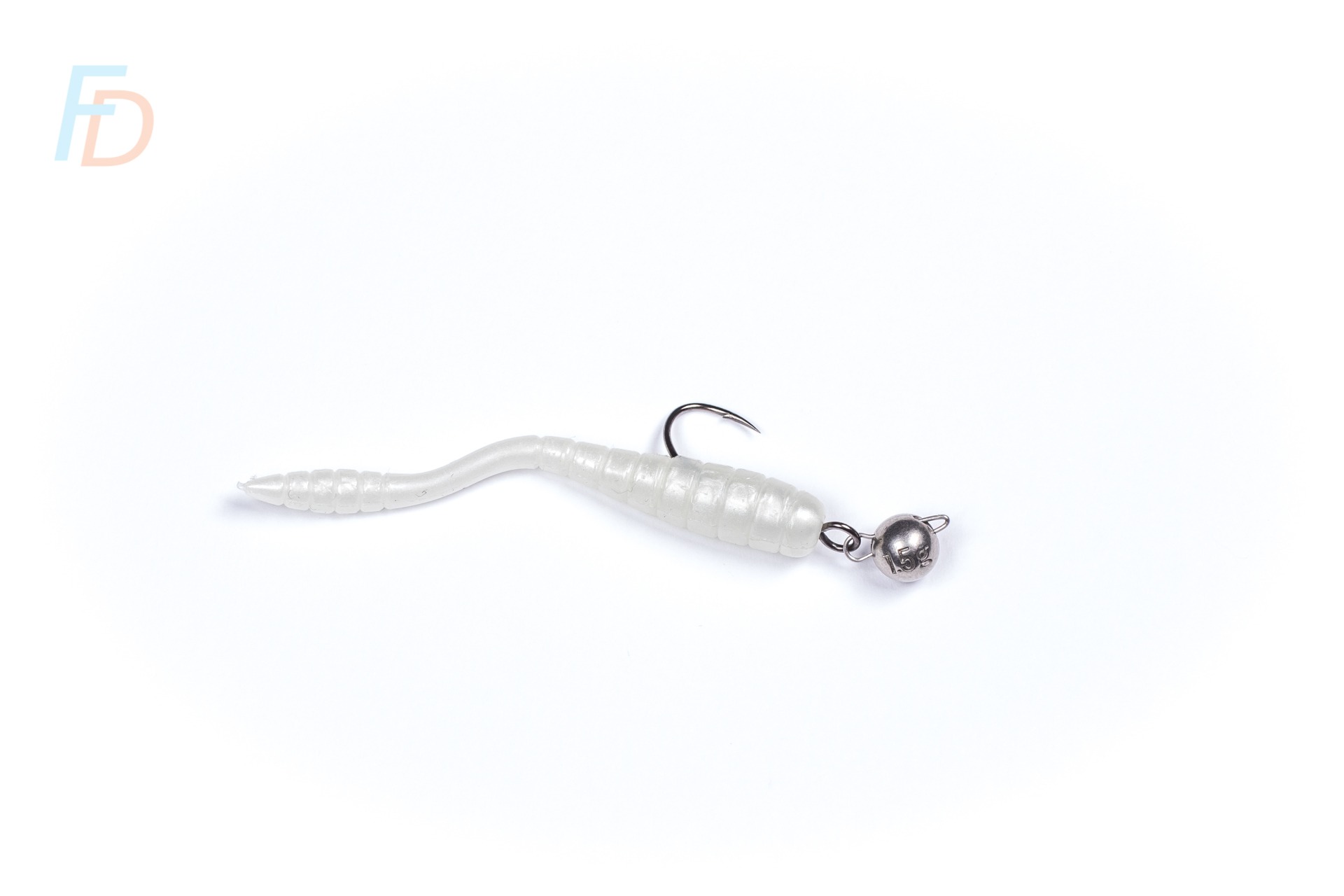
2" Nine Seven Tungsten Floating "Fat Ass" Worm (with 1.5-g Tungsten Cheb)
OK, What is a Stickbait? (Lure Fishing Pop Quiz)
This one can be really confusing – because the answer can be different depending on where you are from and what type of water you fish. For bass fishing in the USA, stick baits tend to be parallel-sided, cylindrical soft plastics (the classic example being a Senko worm). There are now lots of competing versions of this bait (e.g. the Z-man TRD shown below):

On the other hand, if you’re lure fishing around Australasia (especially in saltwater); a stick bait could be a type of lipless hard-bait designed to be jerked in a violent zig-zag retrieve.
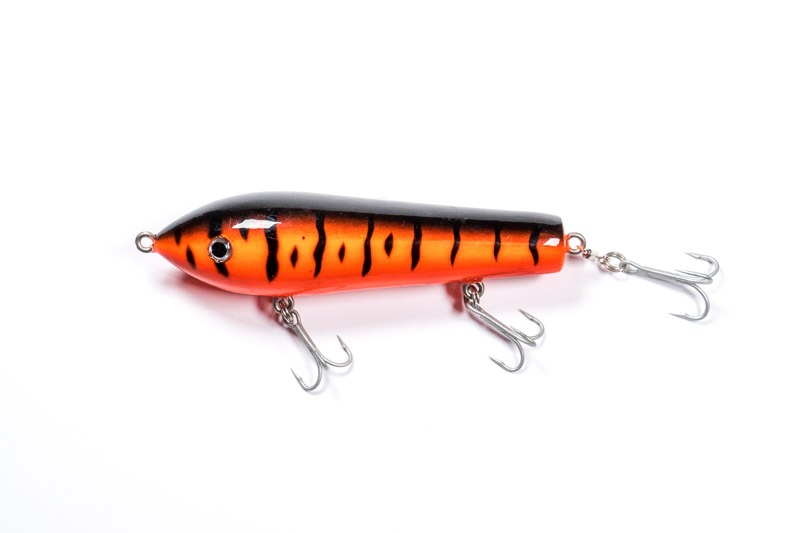
There's more on lipless crank baits below…. To confuse things a bit more, hard stickbaits tend to be sinking baits – where a similar topwater bait would be called a “walk-the-dog” lure...
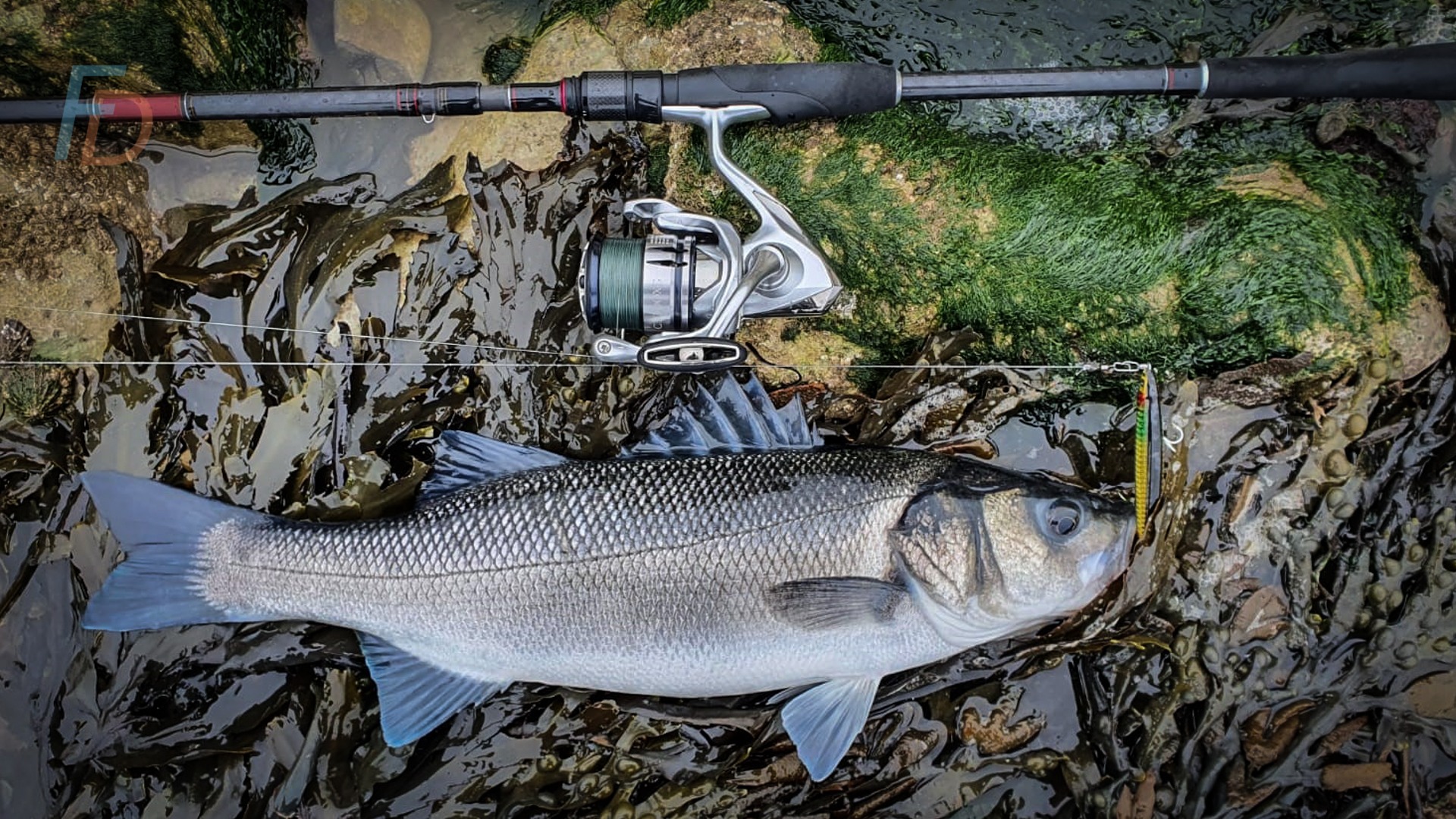
Atlantic seabass on a sinking "pencil" style, lipless stickbait
People spend a lot of time dreaming up new lures, so it's not surprising there are so many types available.
Hard Crankbaits: What is a Crankbait Exactly?
The simplest definition is a fish-shaped hard lure that wobbles from side to side when reeled through the water. Back in the day you might have called these “plugs”; but the choice of actions, sink-rates and diving depths now offers something for nearly every occasion when it comes to imitating bait fish. They come in two main varieties:
Lipless Crankbaits
These rely completely on the shaping of the lure body to create their wobble. Giving an angle to surfaces on the lure that are un-streamlined relative to the direction of pull, it is possible to create a wobbling, wriggling action. They are generally sinking or suspension baits – since it can be more difficult to get floating baits to dive in the absence of a lip. Here's Marling Baits showing the intricate care and design needed to get the surfaces of the lure body to get the bait to work properly in the water.
Probably the majority of crankbaits are not made in a lipless design...
Billed (Lipped) Crankbaits
The lip at the front of these lures creates action and can also control the diving depth of a hard bait. Lips that are set closer to perpendicular to the lure body tend to create a more level swimming action (and don’t dive deep).
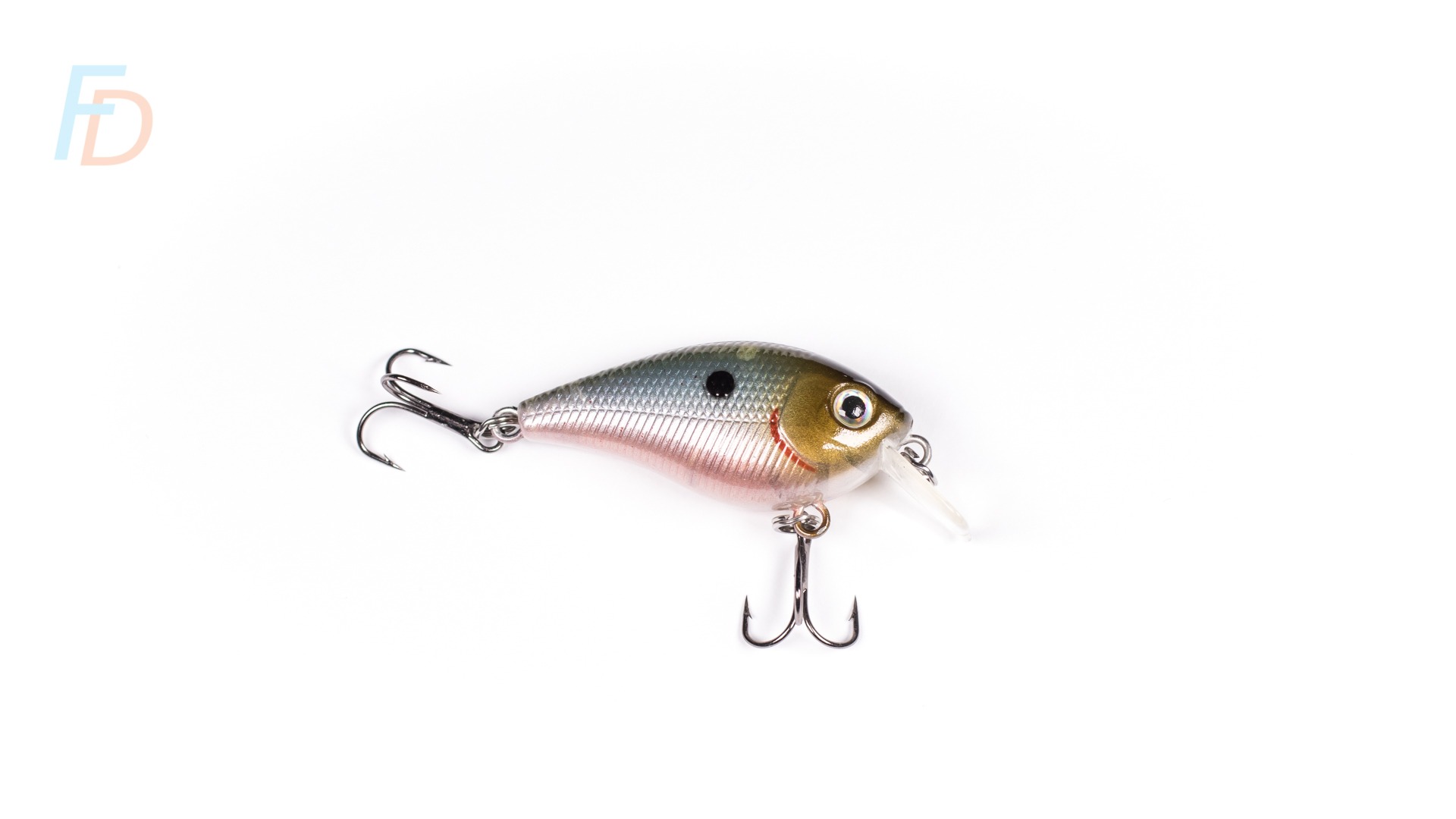
Shallow-running, square-bill crankbait
The larger the lip and the shallower the angle to the lure body (as long as it is below horizontal); the deeper a crank bait will dive.
As well as the fairly tight wiggling swimming action of a classic crank bait; you will also find things called jerk baits on the market. Finding a good definition on how crank and jerk baits differ (that everyone agrees with) is not an easy thing to do. No wonder it gets confusing.
What’s the Difference between a Crankbait and a Jerk bait?
Some factors that tend to separate out crankbaits from jerkbaits include the generally shorter/fatter bodies of crank baits (vs. long, slender jerk bait bodies) and the often smaller lips (bills) of jerkbaits.
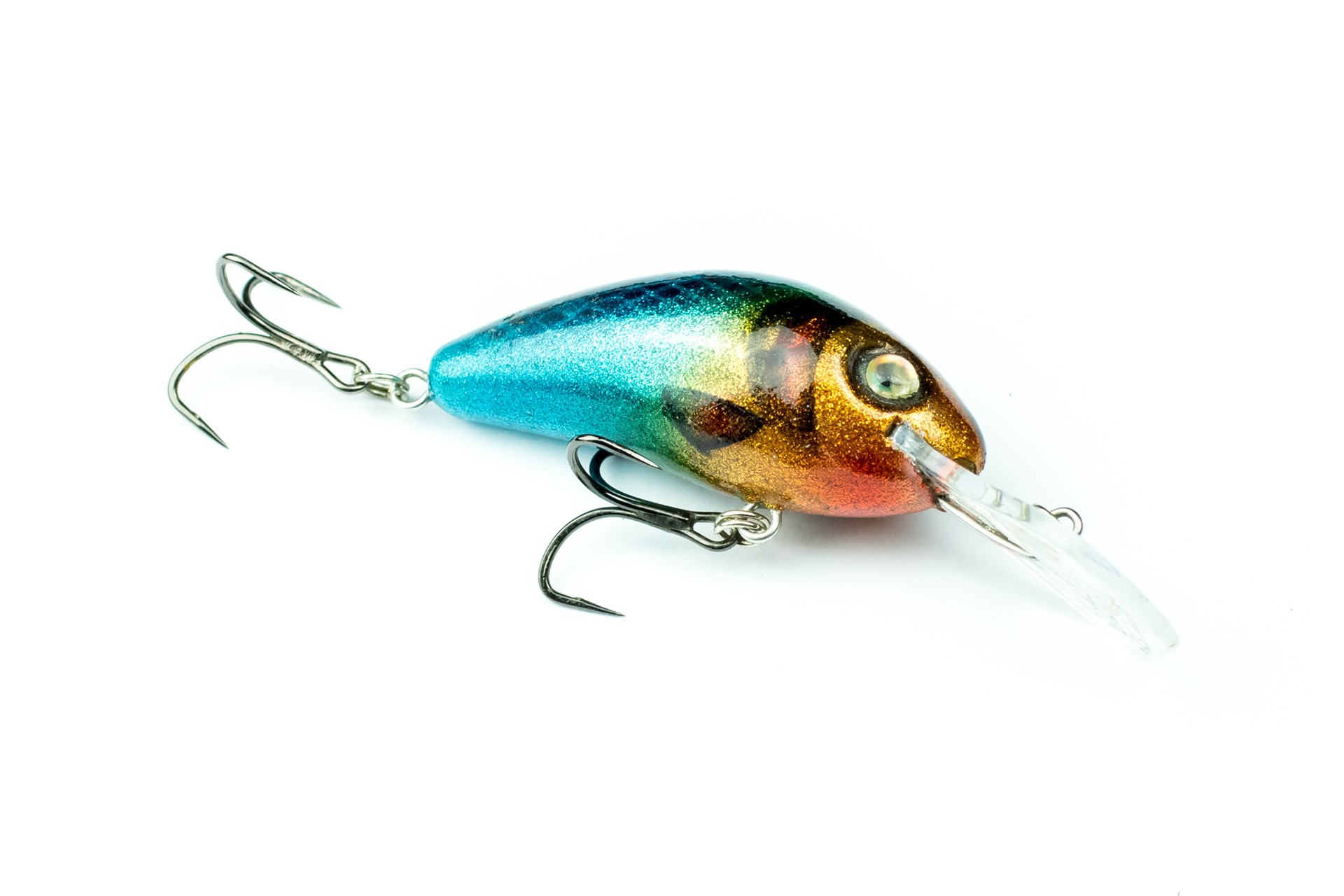
Salmo Hornet - Typical Crank Bait Profile (custom-painted in FD colours by James Pearson)
While jerkbaits usually will wiggle plenty when reeled in on a continuous rolling retrieve – they tend to be more prone to kicking out sideways when jerked hard and then allowed to pause. Presenting the flank profile of a bait fish to a chasing predator catches many, many fish.

Berkley Juke Slow Rise Floating Jerk Bait (long, slender profile)
Now the differences get a bit murky because although some crankbaits are designed to dive really deeply (even though they might float when paused) – you also get jerkbaits with various sink-rates which makes it easy to fish them at greater depth too. On the other hand, square-billed, floating crankbaits will fish close to the surface.
This all makes it quite difficult to separate out jerk from crank on the basis of fishing depth.
Perhaps the one remaining, fairly safe, thing to say is that jerkbaits are (by definition) designed to be fished in a very stop/start jerked retrieve style.
Remember: That sideways turn to present a broad-side profile during the pause can be an irresistable trigger to a following predator.
Crankbaits can do this too – but their strong suit is really a more continual roll or burn back through the water (perhaps bouncing the bill off some of rocks as it bumbles along).
Glide Baits
Often, but by no means always, jointed lures, these hard baits are designed to swim along in graceful, exaggerated “s” shaped gliding curves. When paused they will do a very exaggerated and slow broad-side presentation of their flank to any following predator.

The versatile River 2 Sea "ICBM" is designed to be a glide bait that also works with a tight wriggle when burned back (and can also be jerked)
Sometimes, when reeled in quickly in a “fast burn” style they will have a much tighter wiggle action (as the ICBM does above). A great trick can be to steadily reel a glide bait (so it is swinging rhythmically left and right at its natural cadence - and then give a couple of twitches (or a long pull) with the rod tip. The fish can lock onto (and often follow) the steady S-shaped swimming motion - and then the sudden wriggling kick forwards with a turn out sideways triggers the hit.
Standard Metal Bladed Baits
Spoons - a Lure Fishing Classic
Very much what they sound like... Whether a more of an elongated bar/fish profile or shorter tear-drop shape, these metal baits have a convex and concave side. The hooks are attached at one end of that metal and the line-tie at the other.
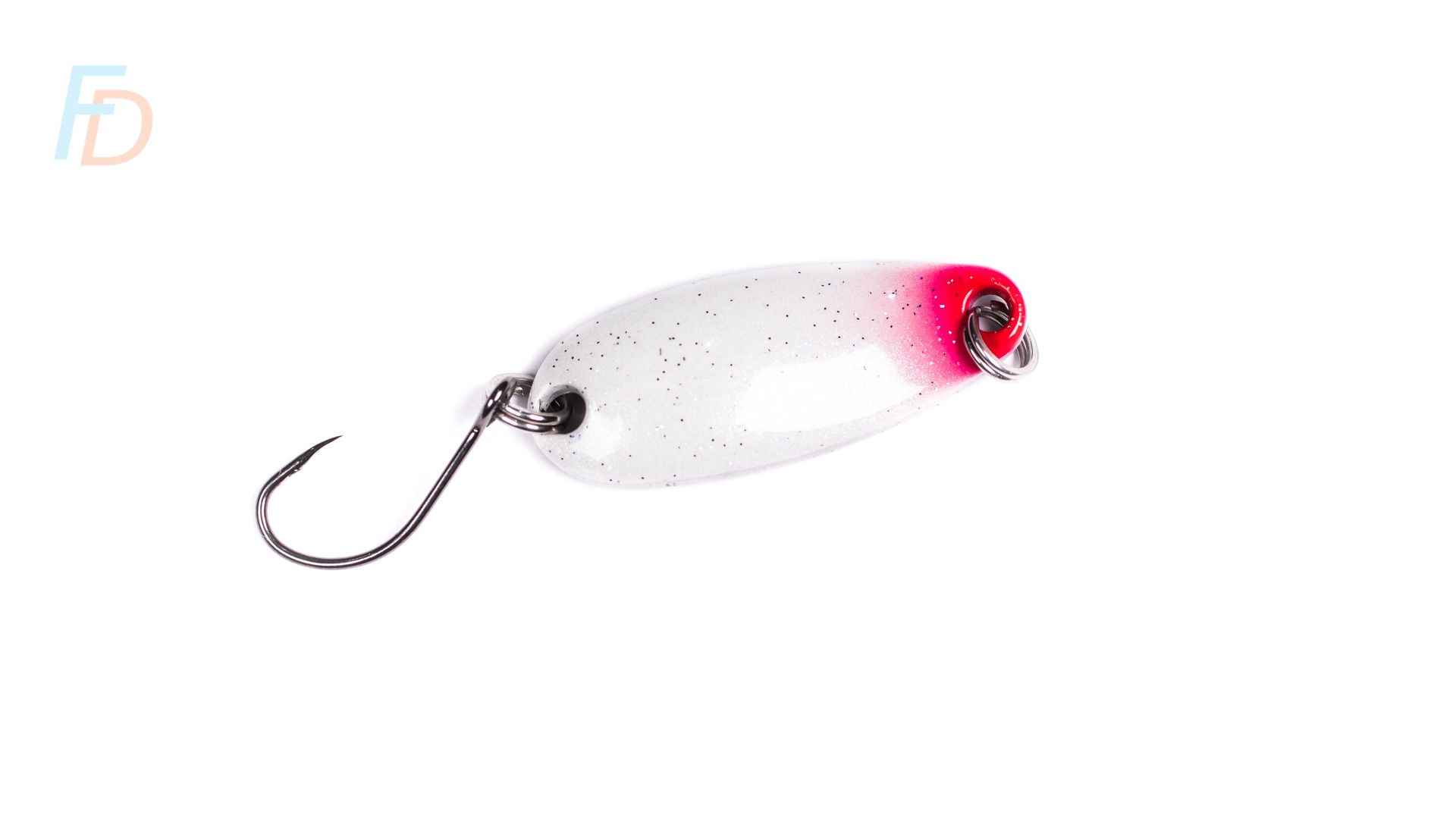
These baits tend to cast well (due to their density) and flutter nicely while sinking - while giving an enticing wobble on the retrieve. Simple is sometimes best.
In-line Spinners
Depending on what type of fishing you mainly do (and when you started); these type of spinners might be the first - and perhaps only - thing that you picture in your mind's eye when someone mentions lure fishing. They have the advantage of working well simply by being cast out and then retrieved at a pace where you can feel the blade working.

Again, in particular situations they can be incredibly effective - it may just be worth thinking carefully about the most suitable hooks to mount on them to match your target species (and whether you're fishing Catch & Release or not). For example, certainly for trout's mouths, even de-barbed treble hooks might be well worth switching out for barbless single hooks.
Spinnerbaits
I remember an early 1990's TV programme about pike fishing where a Scandanavian angler was introduced to an American bass-fishing spinnerbait. His response was "It's not for pike-fishing??!!". The crazy combination of v-shaped wire arms, jig-head and skirt plus offset flashing blades certainly look pretty wild.
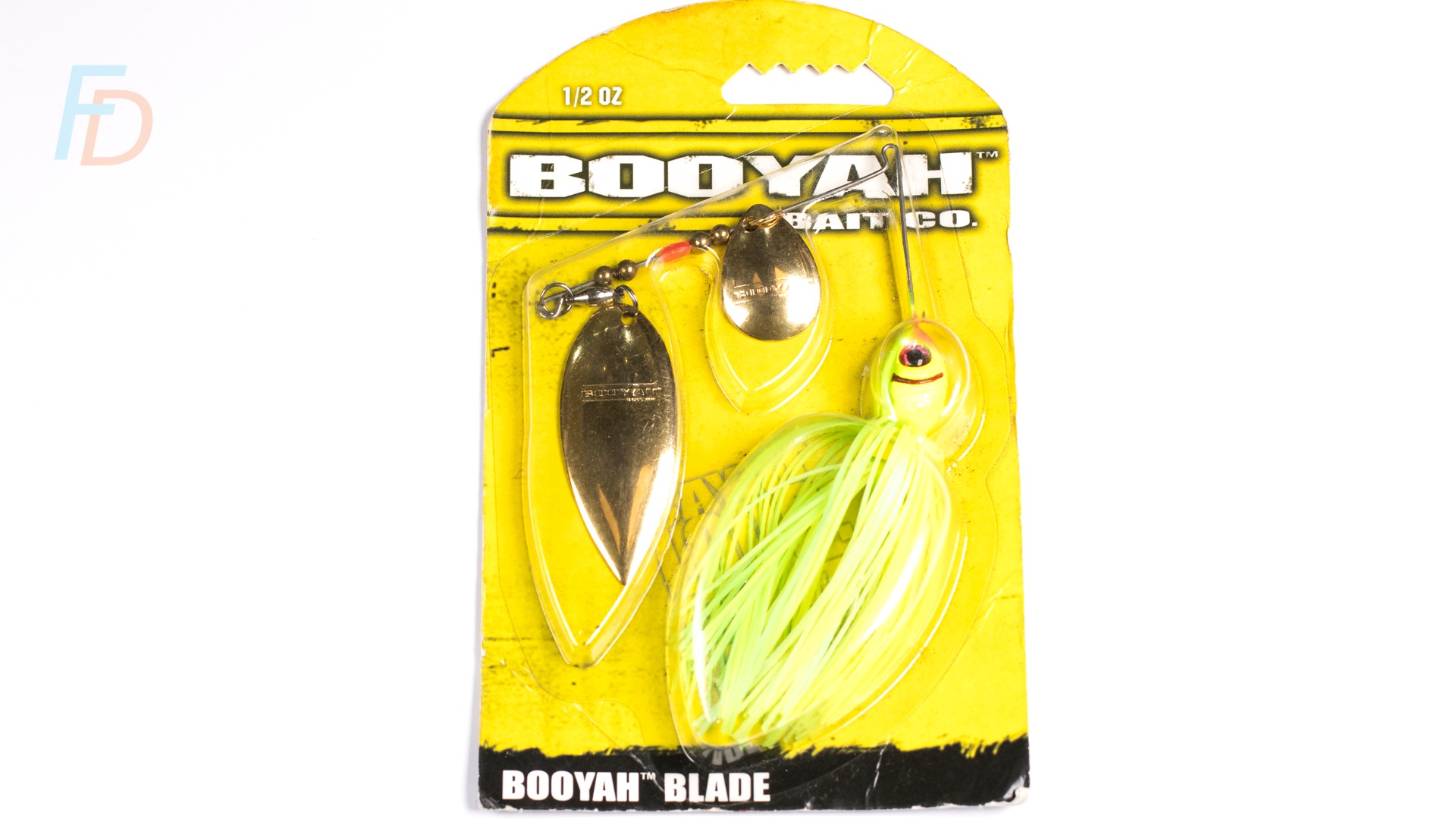
Whenever you need to create water displacement, flash and a sizeable profile (without needing to throw a super heavy swim-bait), then it's worth trying a buzz bait. Although they sink, they can be fished pretty much anywhere in the water column from just on the surface, throught midwater right down to creeping along near the bottom.
The skirt material creates quite a large profile - without adding a ton of weight. It is also a good idea to add a soft plastic trailer of your choice to the jig hook. This could be a soft swimbait with a heavy paddletail, a creature bait with multiple appendages or even just a desirable profile with little inherent swimming action - depending on the effect you are going for.
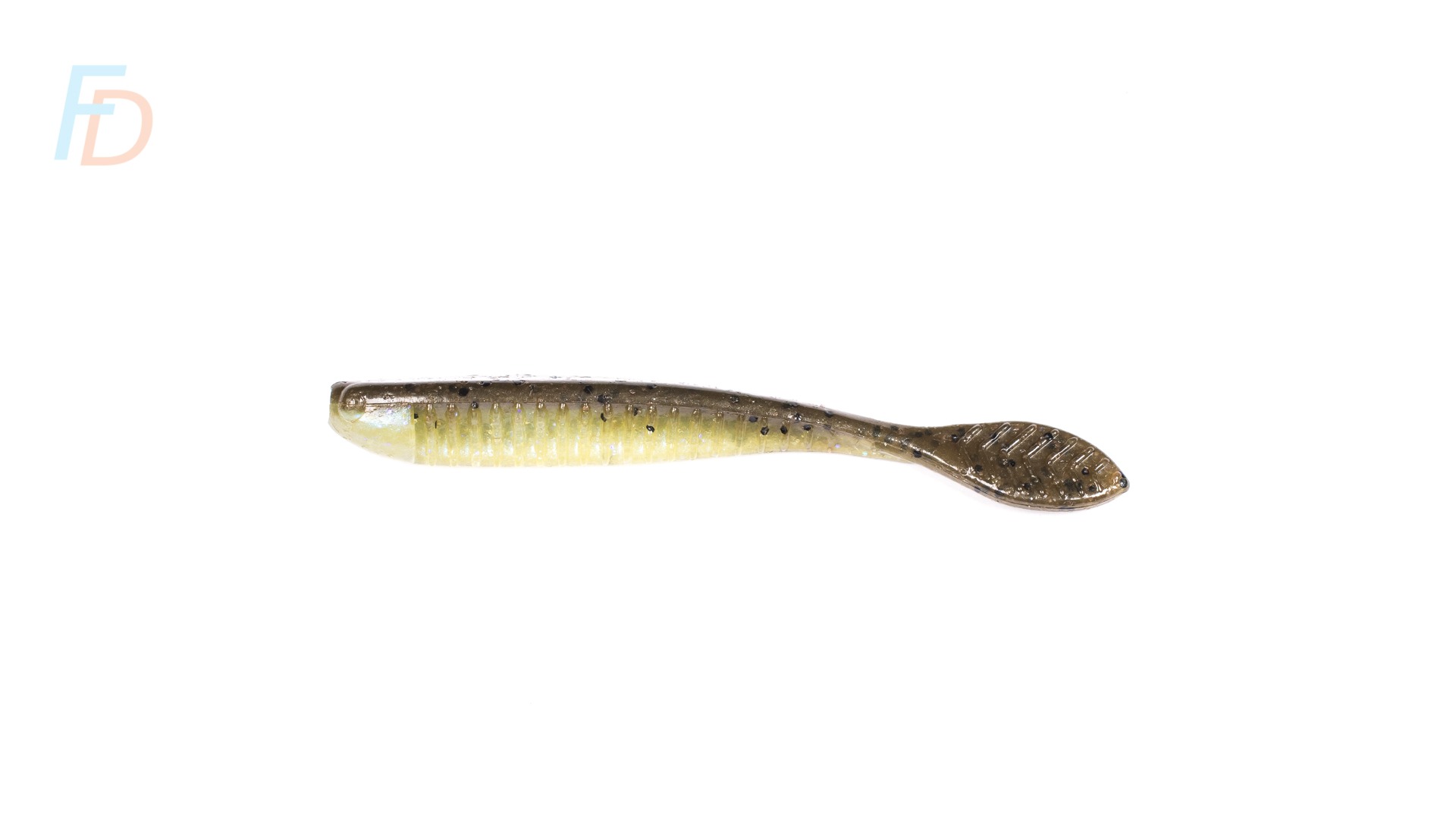
Even though designed for drop-shotting, lures like Z-man Trick Shotz might be the profile you want for your spinnerbait trailer
The design with the offset wire arms is similar to what are known as buzzbaits. On a buzzbait, though, the blade will be a kind of propeller style - and these are fished right in the surface. The idea is that the propeller churns up the water surface and creates a huge wake (and lots of vibrations) to attract the fish during a steady/fast roll retrieve.
Speaking of fishing on the surface...
Topwater: Lure fishing Baits for Adrenaline Junkies
One of the most exciting things you can do when fishing with rod and line is to fish a surface lure and trigger that classic Topwater blowup as a good fish smashes into your bait in a shower of spray. Everything from frogs to ducklings, even snakes, mice and rats feature as imitative topwater baits.
As well as the buzzbaits mentioned in the previous section, there are some different mechanical actions to look out for including:
Poppers
These topwater lures have concave faces designed to create a popping sound when tugged through the water surface.

You can fish these quickly and pop them back in a straight line retrieve or - for very cool effects, tug and release the slack line with your rod tip to create a "walk-the-dog" zig-zagging retrieve. Alternatively, you can even dead-stick these on the surface as we've discussed for sunk drop-shotting baits.
Whopper Ploppers (River 2 Sea)
There is a really distinctive "plip-plip-plip-plip-plip" sound when you retrieve a whopper plopper at the right pace. You need to find out the exact speed so that it makes that sound and pretty much spits up a single droplet of water with each rotation of the tail-piece.
For these you have the choice of a start/stop type retrieve or just a single-paced rolling retrieve. Matt Nelson of NDYakAngler on YouTube catches no end of chunk smallmouth bass on this lure.
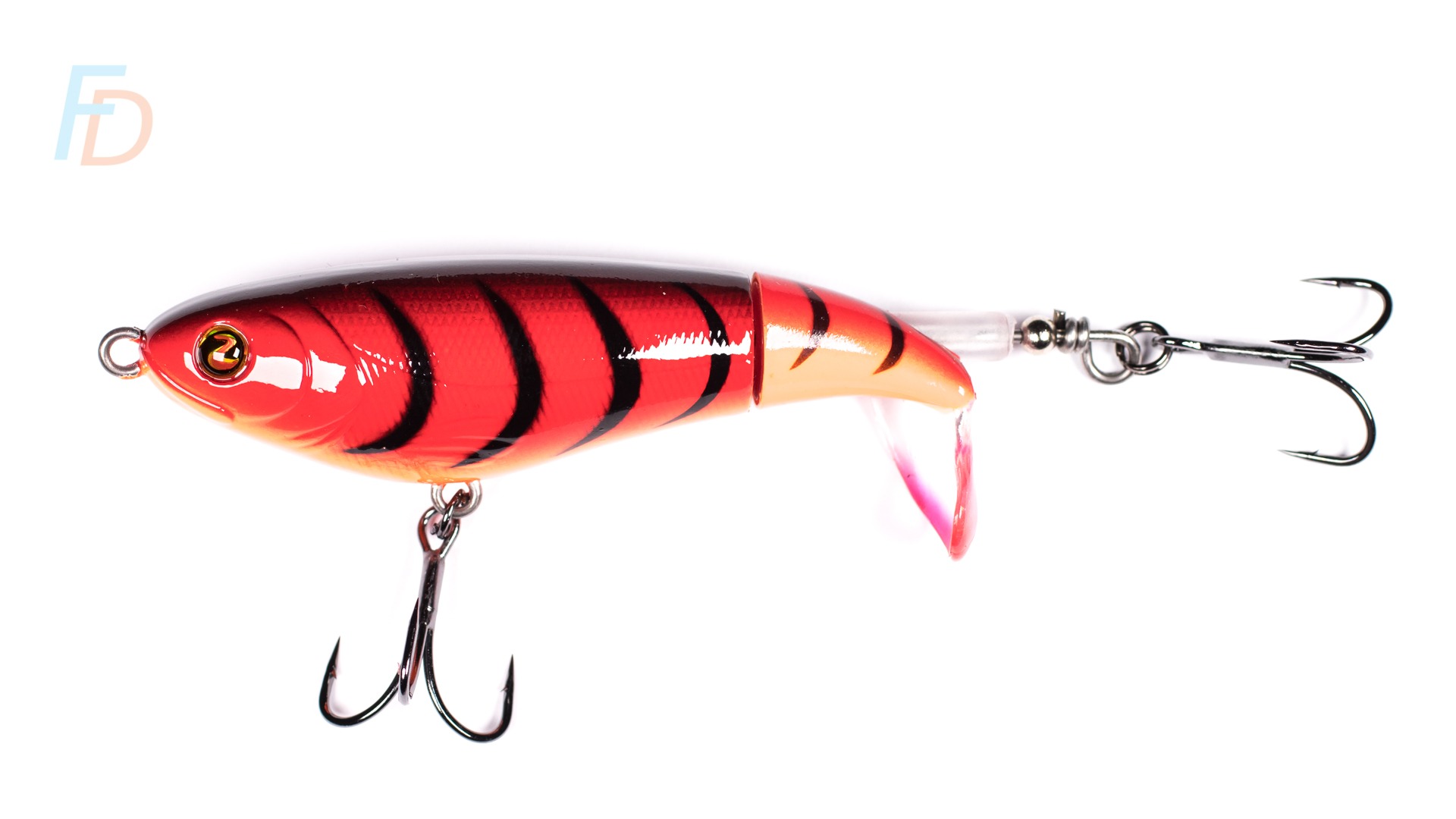
Bait Finesse System Lures
Although, as with many sections in this article, there's a whole post's worth (and more) to share about BFS lures, here's a little cross section to give a flavour:
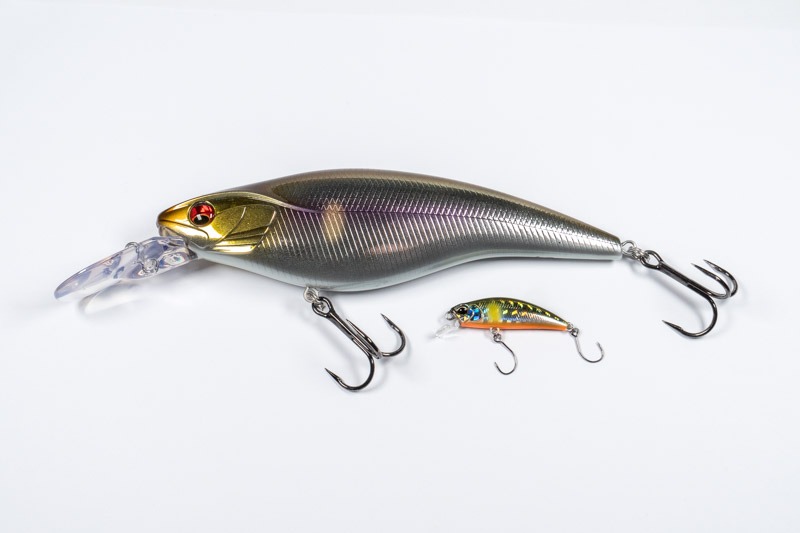
Regular jerkbait (top) vs. 38-mm BFS flat-sided minnow jerkbait (bottom)
Hard baits for BFS
The flat-sided minnow in floating, suspension (roughly neutral buoyancy) and various sink-rates is the classic bait for mountain trout stream BFS fishing in Japan. Many designs include the parr-marks suggestive of yamame (Japanese trout) or the silver/grey/olive baitfish shades with a yellow patch behind the gill covers of the ayu (small, migratory Japanese fish that enters rivers in spring/summer; pictured below).

MajorCraft Zoner Minnow Suspension Jerkbait in Ayu Colour with one, barbless single-hook) weighing in at just under 1.7g
Soft Baits for BFS
Several of these have been included above already - basically, anything that matches BFS tackle in terms of lure-weight is being thrown on Bait Finesse gear. Including soft swimbaits:
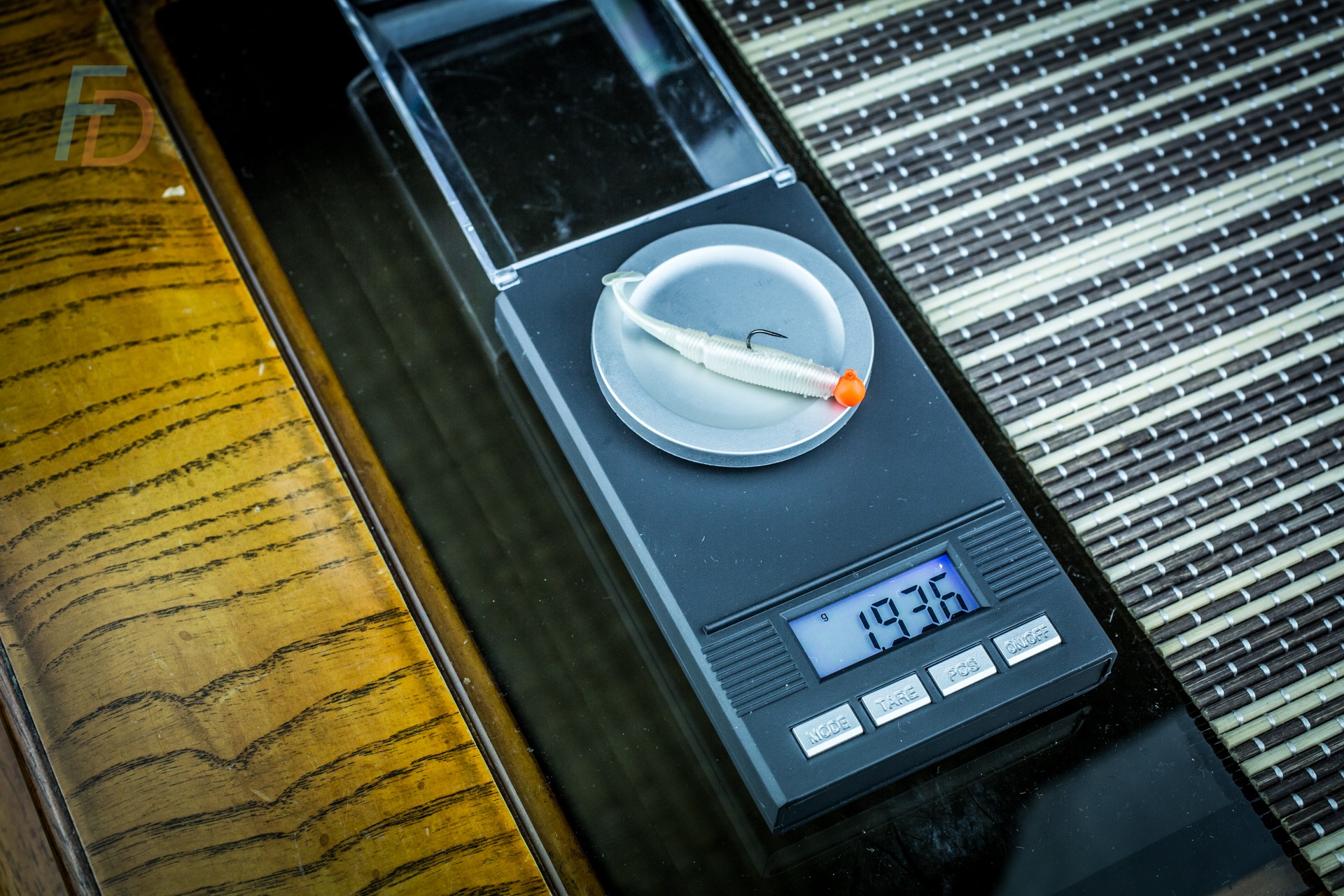
Two inch (50-mm) soft swimbait weighing in just under two grams total (on a one-gram jighead)
Buoyant, soft creature baits presented on Ned rigs are a great option for targeting perch, bass, chub, trout and more in more lowland settings, lakes, canals etc. These are exceptionally great fun to throw on BFS gear - as well as spinning gear.
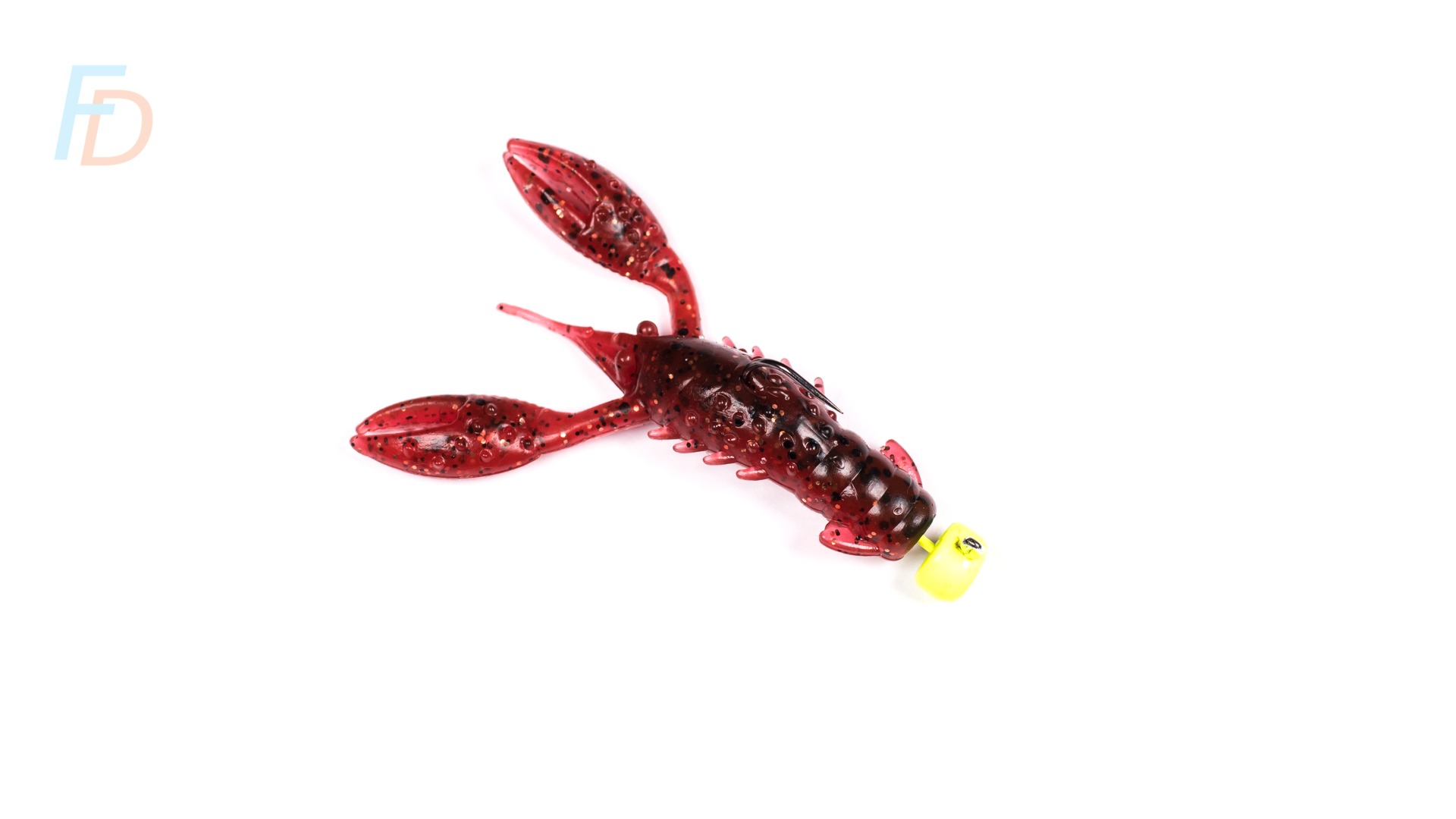
Z-man TRD Crawz mounted on their Shroomz mushroom-head jig hook for Ned rigging.
Lure Fishing Rods – Overview
Let's take a look at another essential component in lure fishing...
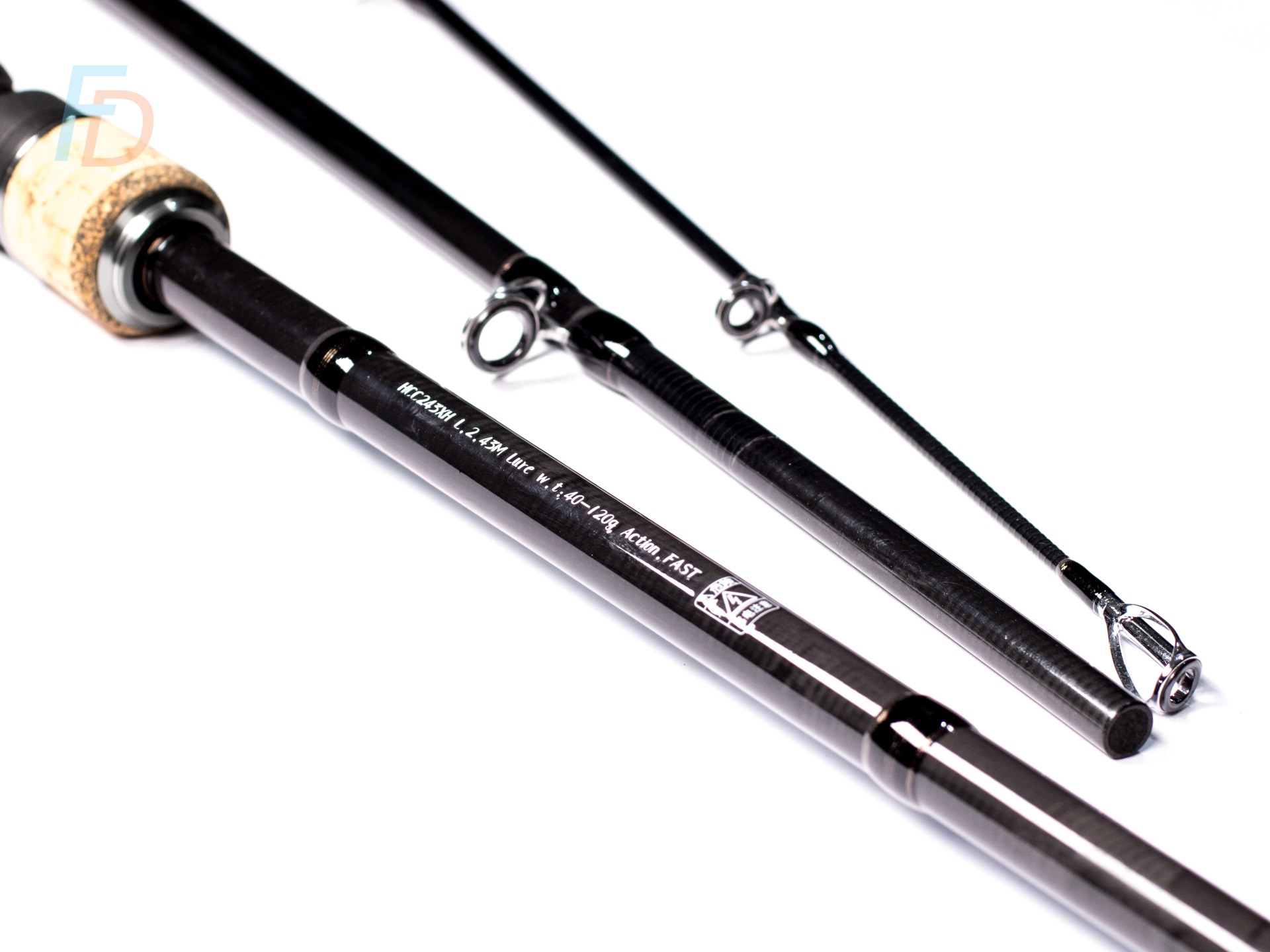
Rather than get super specific, it’s helpful to cover some basics. First of all, longer casts tend to be easier with longer rods – so understanding the fishing distance can help you make your choice. Similarly, if you need to reach out over plants and weed-beds growing at the edge of the water – a longer rod is very helpful.
On the other hand, shorter rods are much more convenient for fitting in underneath tight cover when fishing small streams. They are also easier to flip-cast without dumping your lure or rod tip into the water (or undergrowth) at your feet.
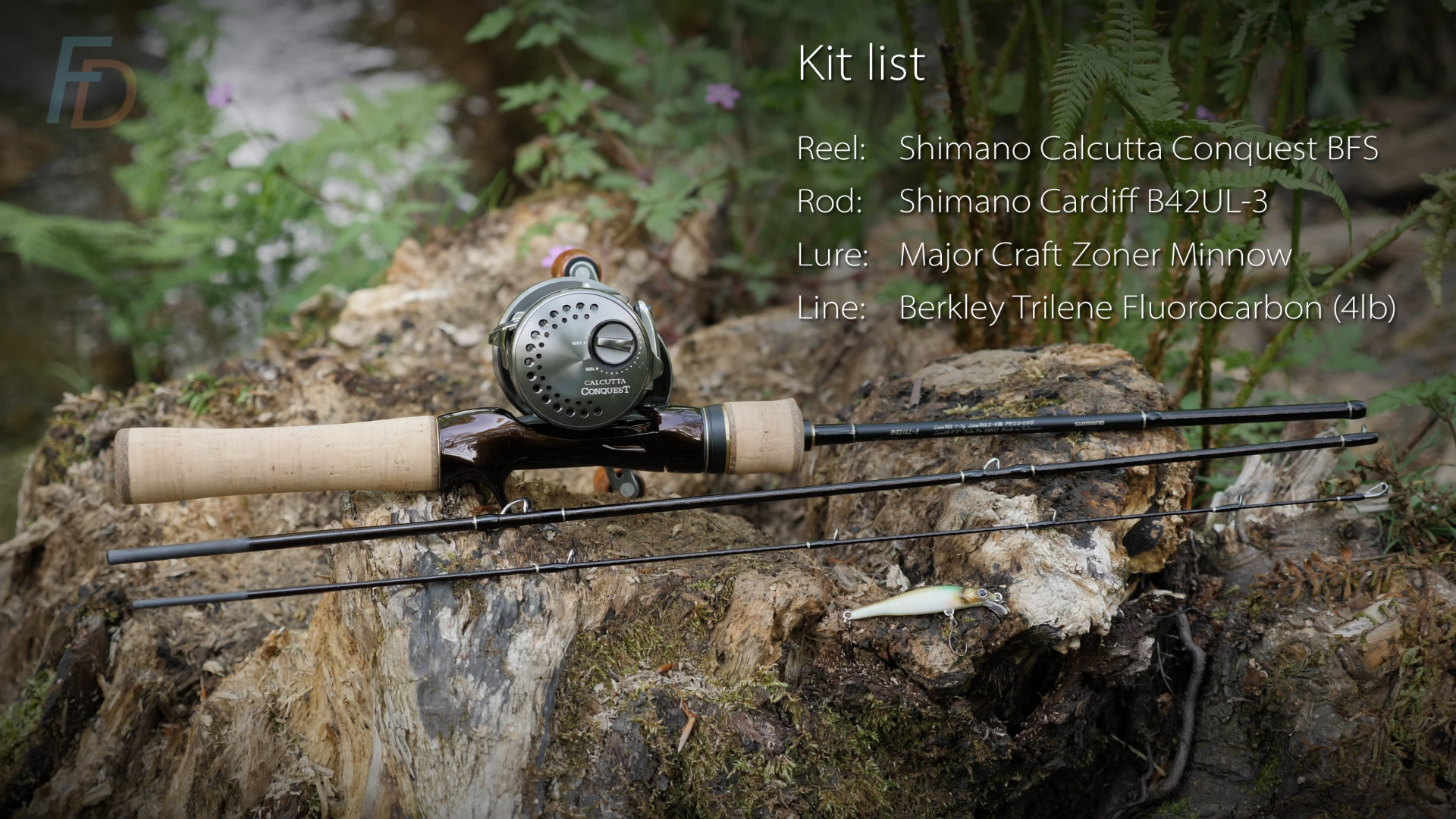
Three pieces and just 4' 2" long - a super-short ultralight BFS rod for small stream fishing
Secondly, lure rods come with a suggested lure-weight rating that they are designed to be able to cast (which makes it easy to match rod to tactics and lures).
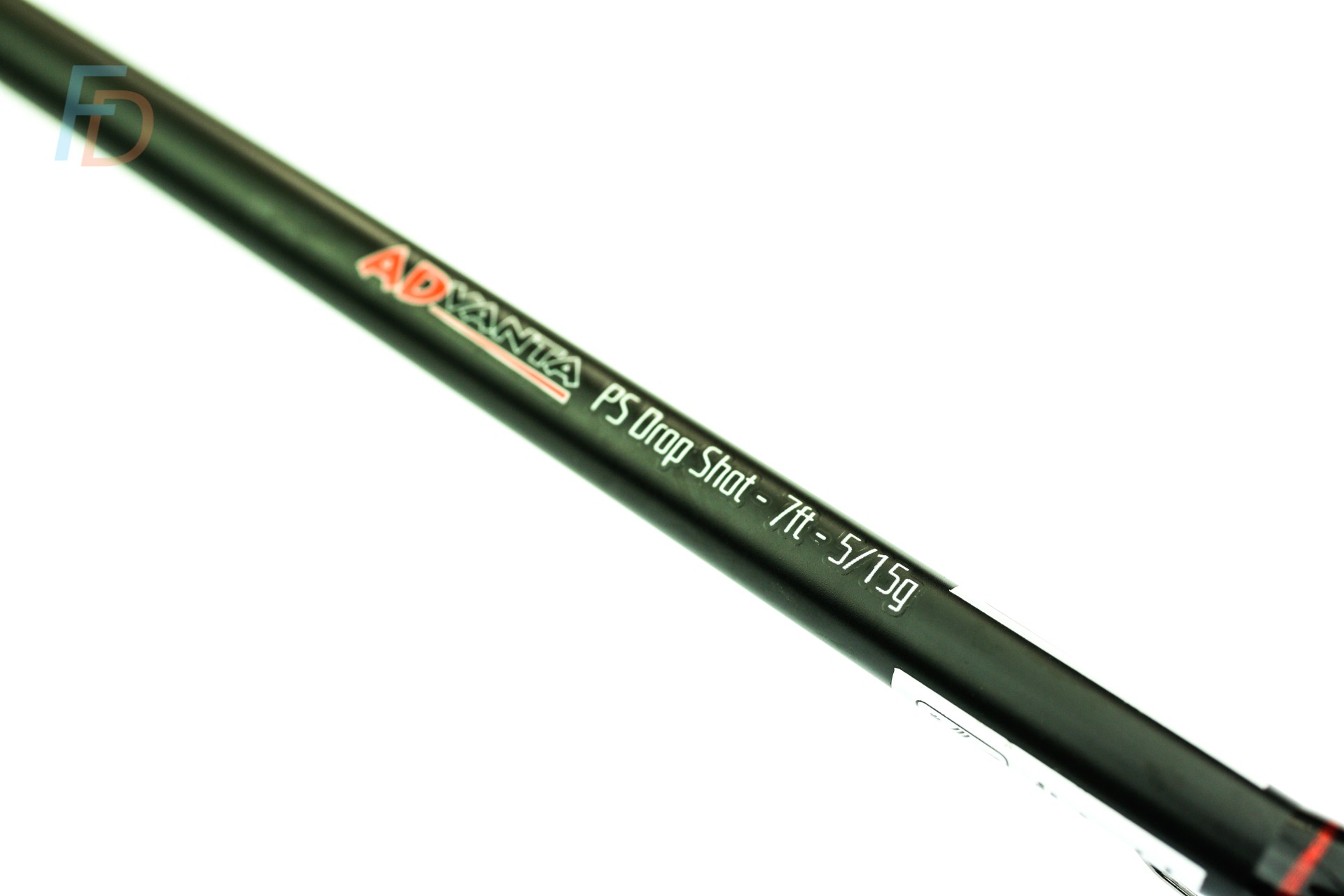
Solid tips to rods are more flexible and can be used to create sensitivity to bites - e.g. in Drop shotting rods (or the ability to cast lighter lures in BFS rods) while still having enough backbone to set hooks and land fish. This is a good place to introduce rod-action:
The action of a rod is separate from how stiff a rod is over-all.
Instead it is a description of where most of the flex/bend happens.
Fast (e.g 7:3 below) actions bend mostly towards the tip; whereas Slow (or “through”; 5:5 below) action rods flex more through the middle and butt sections - with Medium (e.g. 6:4 below) action rods splitting the difference
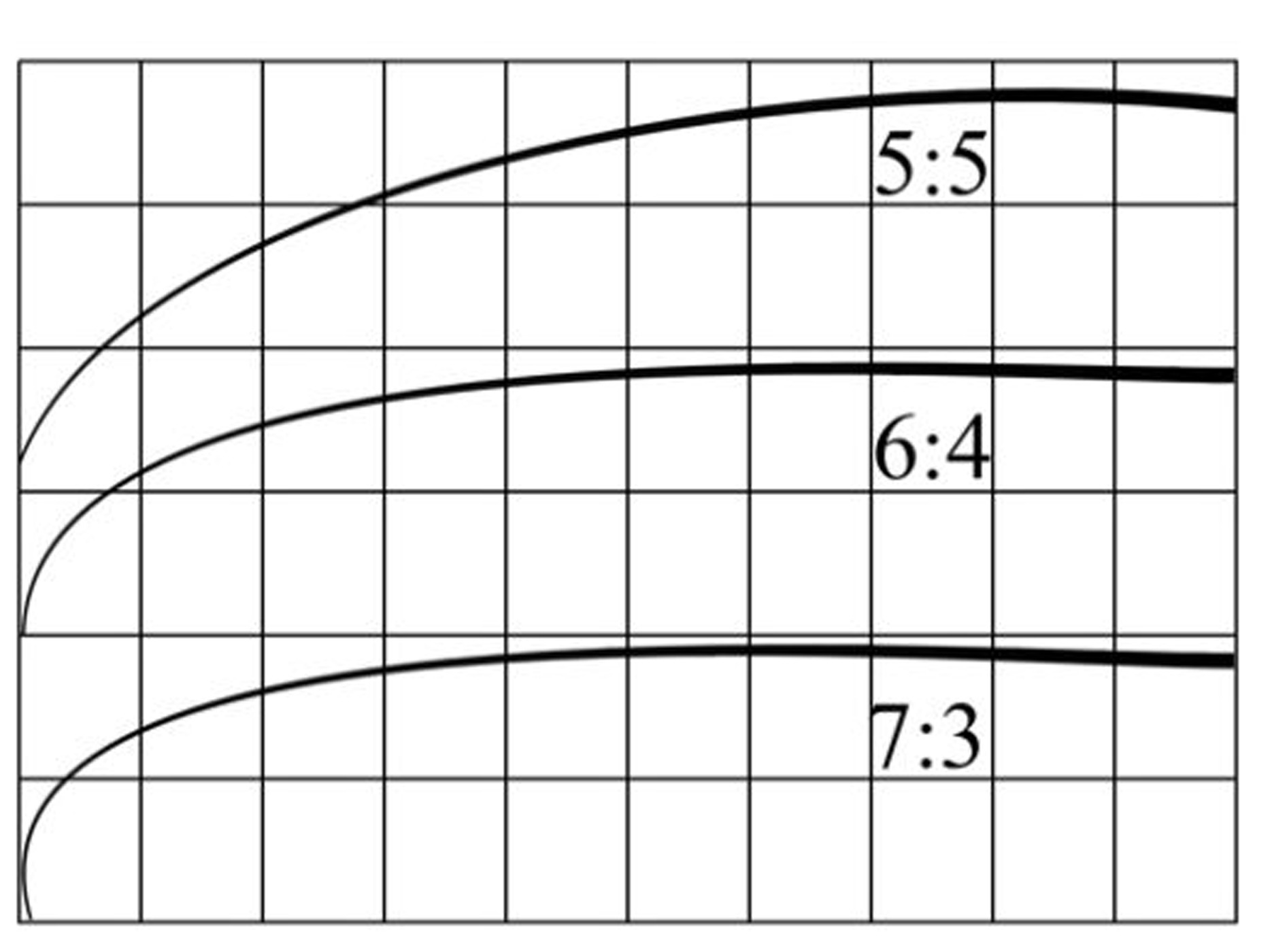
The Japanese tenkara rod convention of rating (out of 10) the proportion of "Stiff" : "Flexible sections is a great way to express slow, medium and fast actions in rod blanks - and is entirely separate from what the overall stiffness or power of the rod. This graphic is taken from our sister site Discover Tenkara which contains tons of info about the traditional form of Japanese fly fishing
Those different rod actions can suit particular casting applications – as well as just personal preference. With tip/fast actioned rods, the flex and then recovery or elastic rebound of the tip-sections of that blank happens in a shorter time than the time it takes for a rod of the same length to bend through to the butt and then recover.
Rod Action will also interact with RECOVERY of particular materials used to make rods
Recovery is how quickly a rod springs back straight after being forced into a bend by loading it...
Graphite rods tend to have faster recovery than glass-fibre rods for a given lure-weight rating
So, slow actioned rods, with a slightly slower recovery can be an advantage if you are trying to carefully time the release point (i.e. when to let your lure fly) when using casting styles that rely mainly on the rod acting as an elastic spring or catapult.
Or, if you are looking for maximum range – and are able to load a fast-actioned rod hard enough to bend the stiffer sections of the blank – then you may gain some distance that way.
With the action and recovery of rods introduced, it’s worth mentioning that lure fishing rods come in two main categories:
Casting (or Baitcasting) Rods for Lure Fishing
These are designed to be used with baitcasting (or what, traditionally, have been called “multiplier”) reels. The rods for baitcasting reels typically have a trigger to help you grip the rod comfortably with the reel sat on the upper side of the handle.
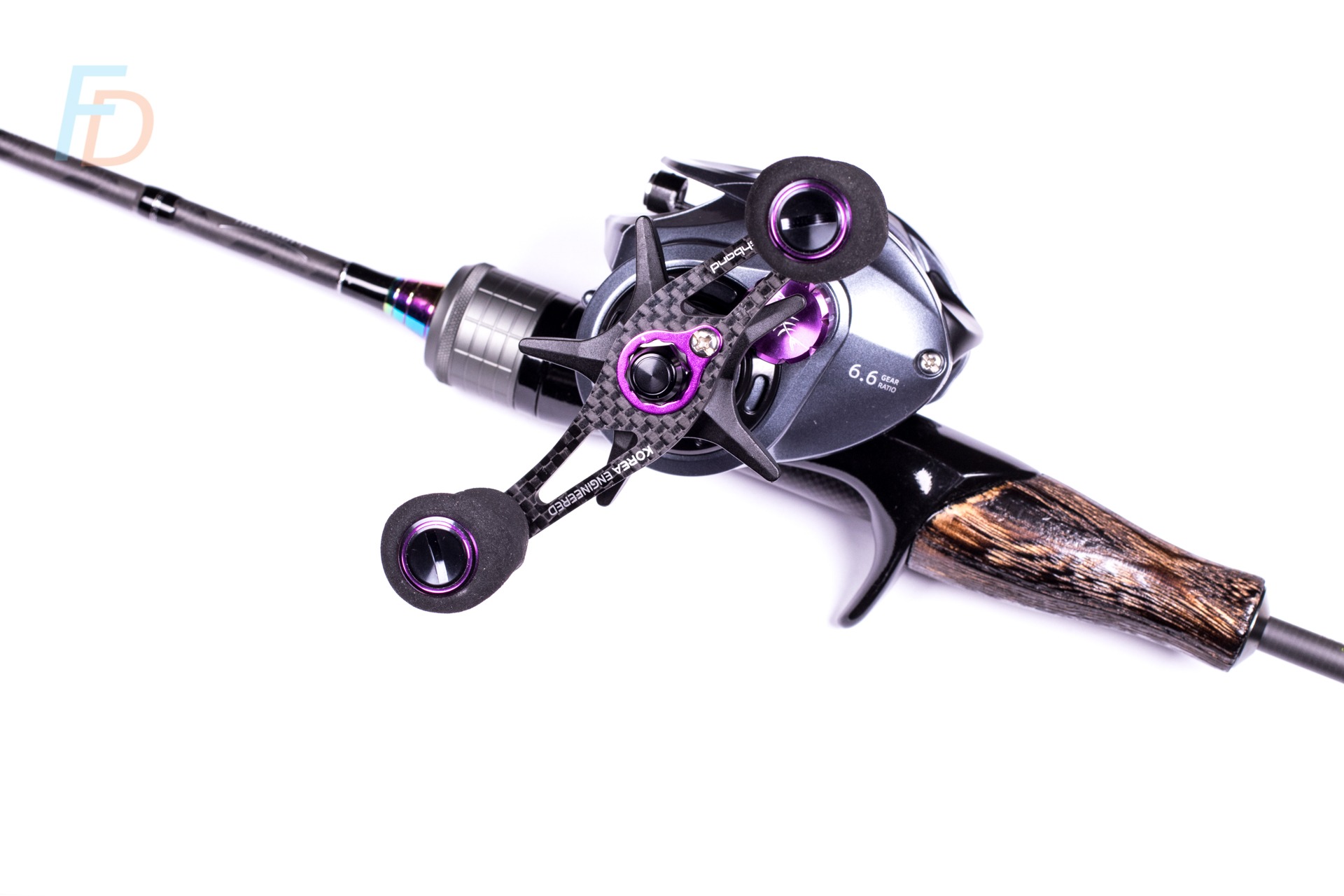
That gives you access to the spool-release (and also direct thumb-control of the spool). For this reason, the line guides on a baitcasting rod are fished uppermost. The relatively direct angle of line peeling off the reel through the guides when casting means that there is no need to stand the butt guide a long way off the blank – or to make that guide in an especially large diameter.
Spinning Rods
Spinning rods don’t have the trigger grip, since the reel is fished hanging below the rod – and the reel foot fits comfortably between the fingers of your rod hand.
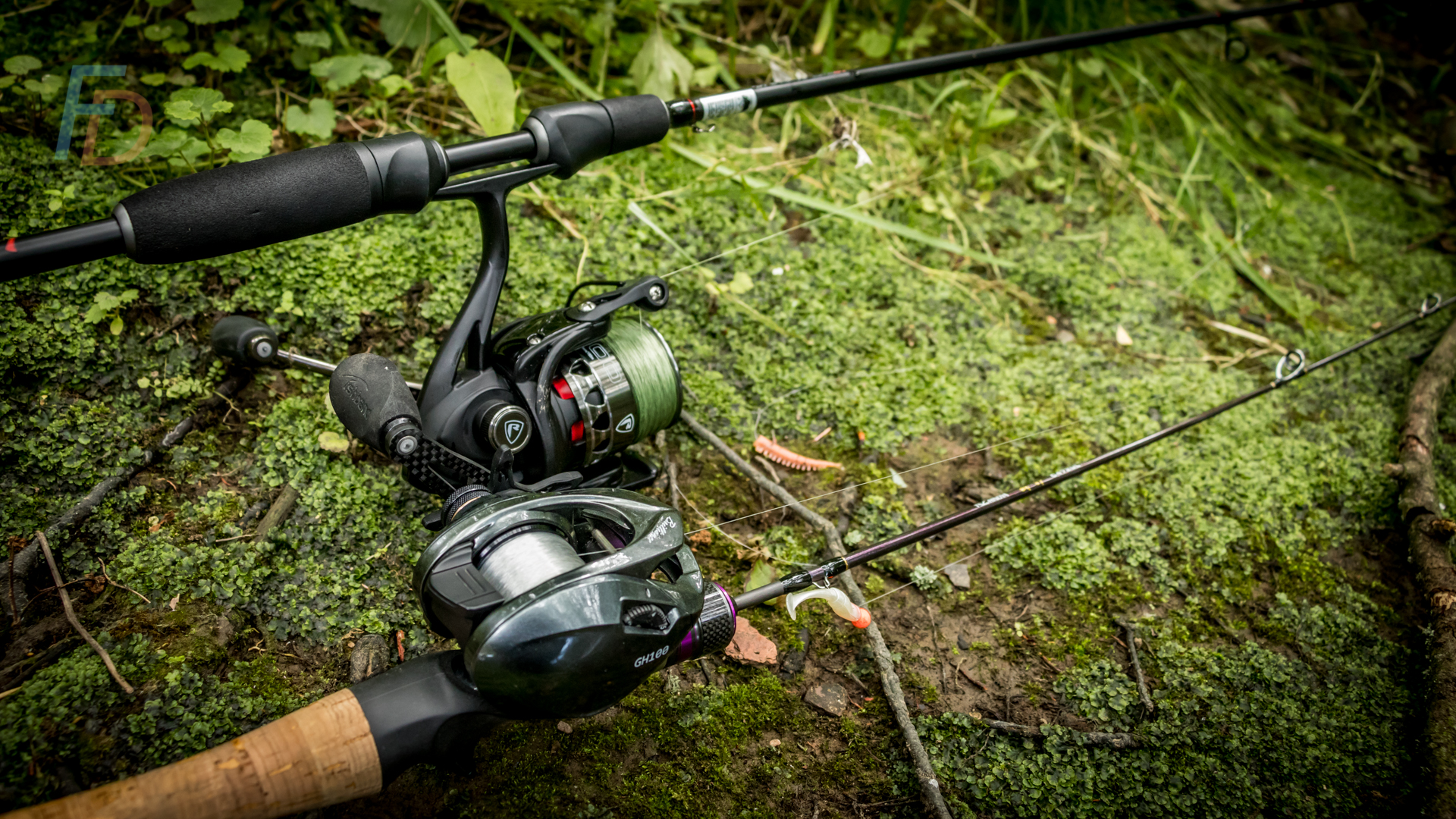
Spinning rod (top) with the reel sitting below the handle vs. Baitcasting rod (bottom) with the reel sitting on top
Similarly, the line guides are fished on the lower side of the rod blank (since the reel hangs below the rod, rather than sitting on top).
When casting a fixed spool reel, the line peels from a fixed spool reel fairly wide coils. Because of that, the friction of the line as those coils rub through the first guide (before they become a narrower, straighter line) might harm your casting distance. That friction is reduced by having a larger diameter butt ring – and setting the ring much further out from the blank on longer supporting legs.
Lure Fishing Reels
There are some choices to be made between the two main types of reel used for most lure fishing:
Fixed spool (spinning) reels
The fixed spool has the advantage that, with a properly filled spool, it can easily cast very light lures over a considerable distance. There are also many highly affordable fixed spool reels on the market.
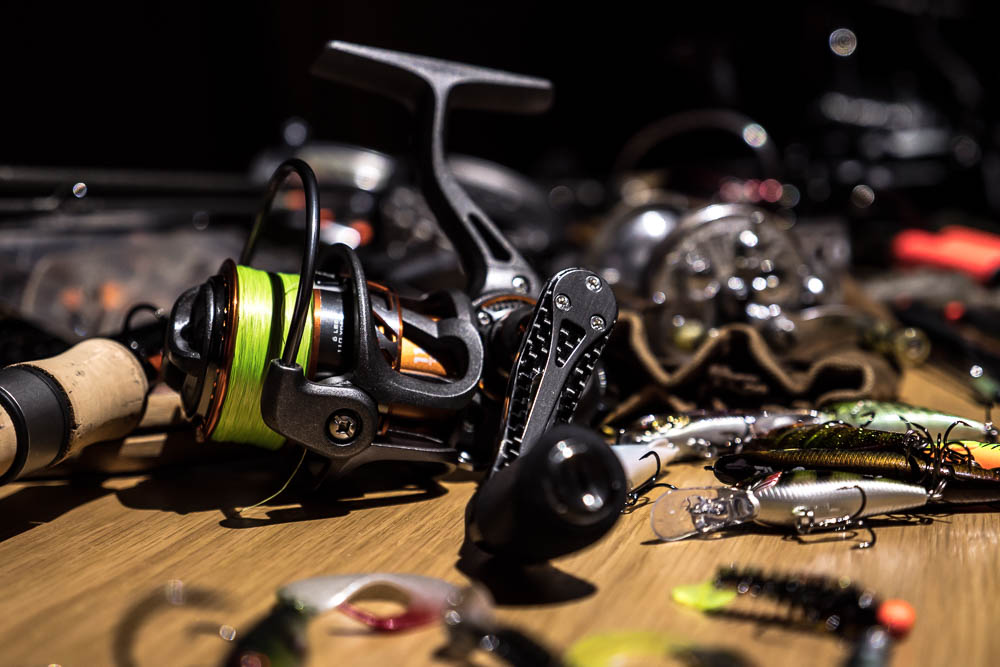
It is possible to teach a beginner to cast a fixed spool reel in a pretty short time. Even if the drag is relatively poor quality, you can play a large fish by using the backwind. In other words, nearly all fixed spool reels have a switch that allows you to disengage the anti-reverse. That allows you to reel in to bring a fish towards you and keep the line tight – or to very accurately wind in reverse to pay out line to a running fish.
Baitcasting reels almost never have what you would call a backwind feature...
Even the early models of baitcaster that do not have a free spool mode (where the reel handle spins in reverse during casting) are difficult to use for back-winding. This is due to the crank arm being generally so short that the actual handle knobs spin so fast as to become a complete blur when a fish runs and takes line.
You’d really struggle to backwind fast enough to keep up in that situation!
Baitcasting reels
Baitcasting reels have a number of things going for them when it comes to a variety of lure fishing applications:
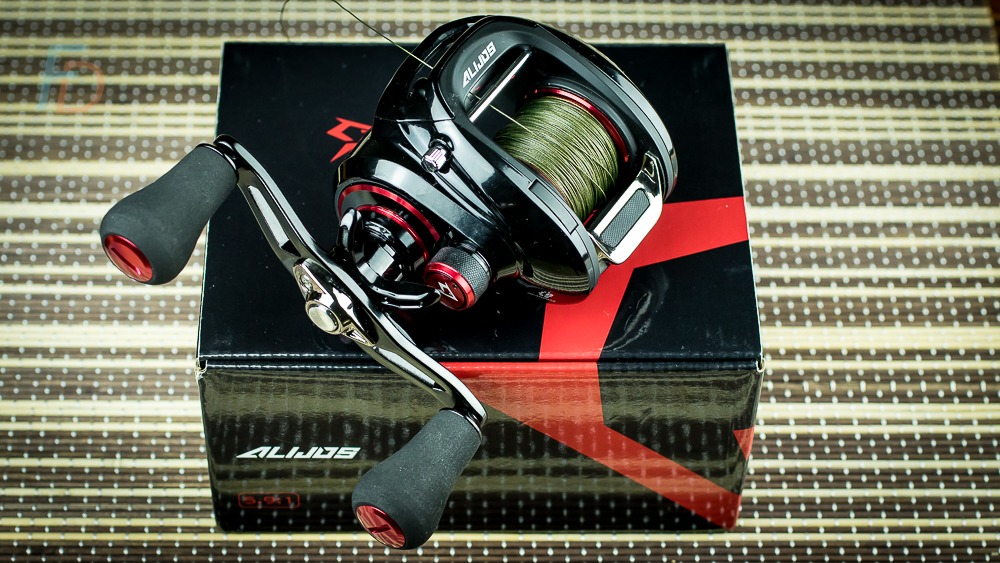
They do not introduce any line twist – even if you wind in while the drag is slipping. If you try that with a fixed spool reel, it can create so much line twist you may end up with an impossibly furled knot of nylon, fluorocarbon or braid.
For casting larger lures, on spinning reels you can get the painful ripping of the reel line pulling free from where you’ve trapped it against the rod handle for casting (while the bail arm is open). In contrast your thumb pressure on the spool is the only thing that is released during the cast when fishing with a baitcaster.
You have more control over the lure and the line while the cast is flying towards its target. Whether by magnetic or centrifugal brakes (or simply from light thumbing of the spool during the cast), that very slight resistance helps to cushion the lure’s splashdown.
On side-arm casts, adding a little extra braking can let you curve the lure to the left or right (depending on which arm you cast with – and whether your arm is going out to the side vs. a cross-body arm position).
The technology for building baitcasting reels is now allowing lighter and lighter lures to be cast on specialised “Bait Finesse System” baitcasters.
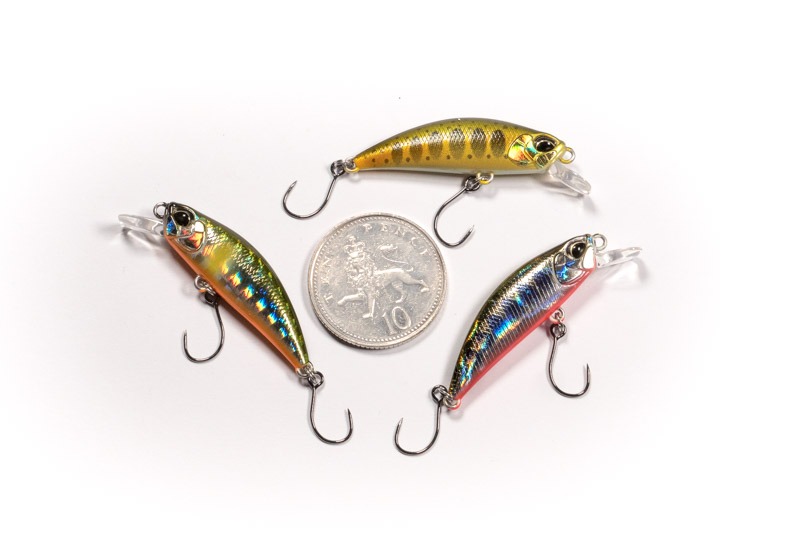
These need to have exceptionally light, shallow spools, strong – but highly adjustable - braking systems and ultra low inertia bearings. This is all necessary so that the inertia of the spool can be overcome by even a light lure – without having to throw it so hard it creates an uncontrollable, wildly-spinning spool.

Whether you have a spinning reel or baitcaster - you'll need to know how to correctly add line to your reel.
Lure Fishing Lines
As with lures, there is an overwhelming range of lines to choose from when it comes to loading your lure fishing reel. The most obvious categories to divide these into are braided lines and monofilament lines (of BOTH fluorocarbon and nylon/copolymer). I know that these days “mono” is used to refer to nylon rather than “fluoro” (fluorocarbon) – but technically it just means “one-strand”. Originally, saying mono was meant to tell you that the line wasn’t a multi-strand, braided line.
The main characteristics of these three types of line are:
Braid
Braid tends to have less coil memory, be smaller diameter for the same breaking stream, have almost no stretch, be good at resisting line twist, be very bad at resisting abrasion and come in a huge range of colours (from hi-viz to stealth).
Fluorocarbon
Fluorocarbon usually has less stretch than nylon – but more stretch than braid. It is difficult and expensive to dye, has pretty poor abrasion resistance in breaking strains below about 30lb, is often a little stiffer/more wiry than both braid and nylon and is denser/faster sinking than either braid or nylon.
Nylon
Nylon/nylon copolymer fishing lines tend to be the most elastic of the three types – while diameters can be comparable to fluorocarbon for a similar breaking-strain, they are thicker than braid. Nylon lines are much easier to dye than fluorocarbon and the wide range of different formulations can create a surprising range of textures from supple to stiff.
Bite-Proof Traces
Look, if you're going to fish for toothy predators like pike (or where there are a lot of pike present - even if you're targeting other fish); you'll need some kind of bite-proof trace (sharks are another good example!). In some sea fishing (and increasingly in pike fishing) very thick fluorocarbon is being used with some success (in the 50lb to 100lb breaking strain region.
However, if you're looking at wire traces (and are perhaps worried about losing the action of an especially wriggly bait) - then trying out braided titanium wire traces might be a way forward for you. Here's John with a great tutorial on how to make wire traces:
N.B - as pointed out by Jorvik Angler in the YouTube comments; stiff single strand titanium can potentially be good for glide baits and inline spinners - where it supports rather than hinders the action. Lure fishing, as with anything, benefits from choosing horses for courses!
Which Overall style of Lure Fishing Line Should I Choose?
Again, the best approach is to understand the application and effect you’re aiming for – and then work backwards to the best combination of reel and line type. Hopefully, using the information above on line materials and their characteristics can help you with that process.
Lure Fishing Retrieve Types
On lots of YouTube videos you will see quite a vigorous combination of winding and jerking the rod-tip at the same time - which MIGHT be a great option for the lure and rig you're fishing (and the fish you're targeting).
However, just because you can fart and chew gum at the same time - it doesn't mean you necessarily should.
One of the worst things to do is to just fall into doing a particular style of retrieve without really understanding what it does to your lure - and why
Although covering this subject could be a life-long project, it is definitely possible to get some foundations in place pretty quickly and easily. At the risk of repeating myself in this article, one of the most important things to consider is the depth your lure is covering. Your retrieve style - coupled with lure choice - is a big factor in controlling presentation depth. Taking the Fishing Discoveries cross-training approach, it is easy to see how these same mechanics also play a huge role in fly fishing for stillwater trout.
The retrieve is simply the way you bring your lure back towards you - using a combination of cranking the reel handle and moving the rod tip.
For instance, in that article linked above, pay special attention to the diagram/guidance related to counting down your lures and covering different depths (diagram from that article shown below for convenience):
Dividing retrieves up into three categories can help simplify choices on the water:
"Static" Lure Fishing Retrieves
Typical examples of this include using any of the buoyant soft plastic baits with additional weight to fish hard on the bottom (e.g. Ned rig, Neko rig, cheb-head and offset hook/weedless floating worm/stick/creature baits)- as well as drop-shotting or wacky-rigging sinking soft baits.
A combination of fishing "on the drop" (i.e. allowing the bait to sink gracefully through the water) and then long pauses with the weight or bait resting on the bottom forms the basis of this type of presentation.
Soft baits presented in this way can be brought to life by twitching the rod tip - either vertically or from side to side - in order to create an attractive wriggling action. When line is not retrieved while doing this - it is known as "dead-sticking" (another tactic covered in our drop-shotting article). The strength of this presentation is to create a lot of enticing wriggling - while keeping the bait in the hot zone and maybe irritating reluctant fish into a strike (when they'd never muster up the energy to chase down a swimming lure).
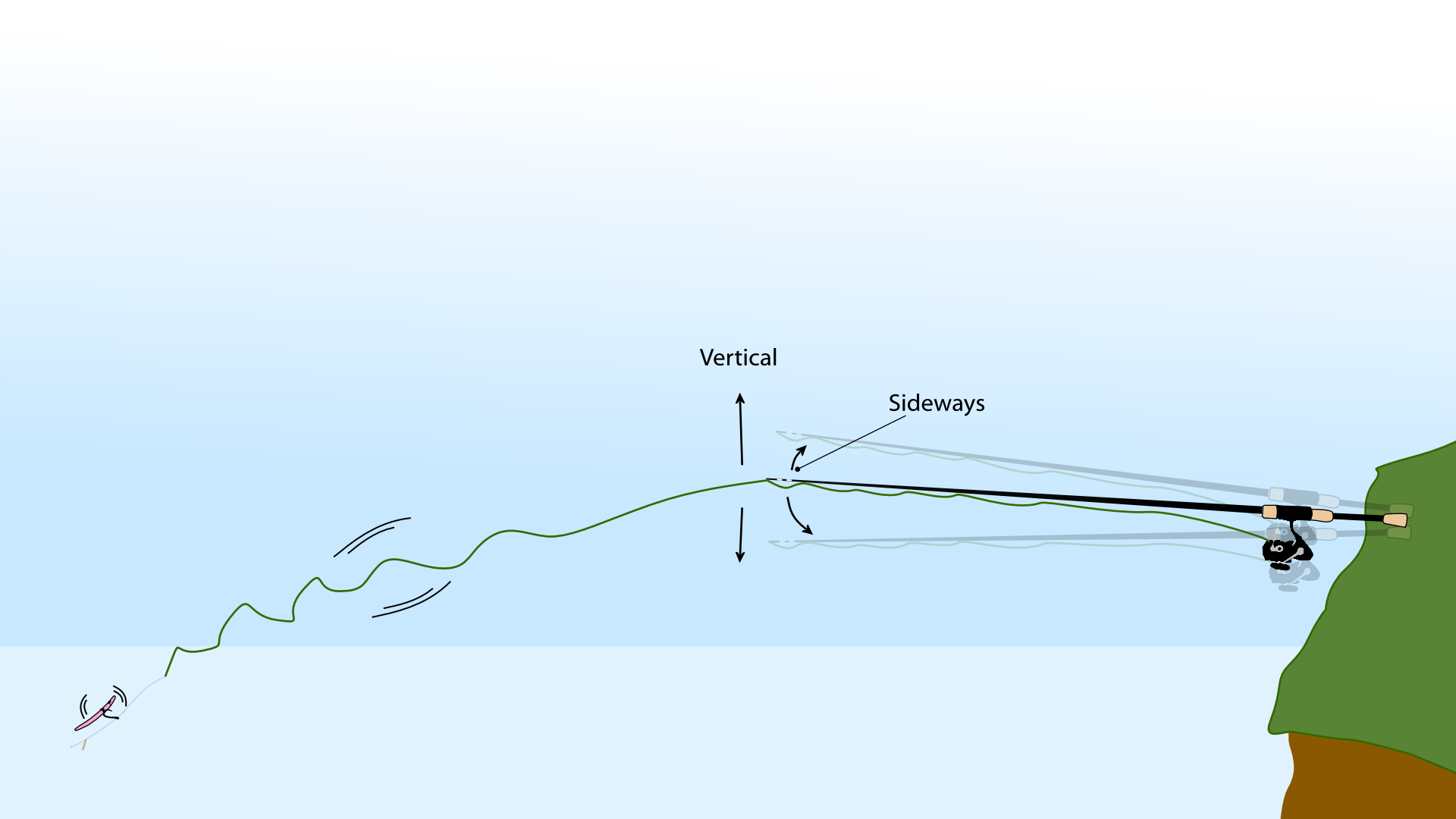
Dead-sticking (the mainstay of static presentation tactics)
"Level" Lure Fishing Retrieves
Simple Roll
These are the retrieves where you cast out and either wind straight back - or allow your lure to sink for a while before winding back. To help describe what has been working for you to your fishing buddy, it can be helpful to split the pace of those retrieves into "Slow Roll", "Medium Roll" and "Fast Burn" speed settings. Think of those as going up through the gears to match the fish's aggression levels (with the fastest retrieve being for the most aggressive fish with the most energy to chase).
Intermittent Jerks
Depending on the action (and diving behaviour) of the lure you're using - adding in extra twitches and jerks with the rod tip while you continue to retrieve can create side-to-side motion without having too much effect on the depth that the lure is swimming. In other words, adding in that extra "jerk-bait" action can still apply to level retrieve styles where you are keeping your bait in one depth band through most of your retrieve.
Typical baits for rolled or jerked level retrieves would include square-bill crankbaits as well as grub-tail soft plastics - and it is equally worthwhile throwing in a good amount of jerks when using things like flat-sided minnows (in fact all jerkbaits).
With roughly neutral buoyancy (suspension) jerk baits, adding a stop/start element to your retrieve can really close the deal with tricky fish (and they'll often nail it on the pause, where a continual retrieve will just have it follow right up to the rod tip before spooking when it sees you!).
Continual Lateral Zig-Zags
Whether "walking the dog" for surface lures or doing the same at depth with a hard, sinking (lipless) stickbait - the clever use of hard sweeps of the rod tip; AND THEN FEEDING SOME OF THE SLACK to the lure on the pause can get a bait to walk from side to side as it comes back to you. For this to work you'll need to zip the lure along with a brisk rod tip pull and reel-handle crank; but almost as soon as you start the hard sweep you need to back off the winding and then start feeding the rod-tip back towards the lure.
It can actually end up that you are more working the slack bow in the line than directly pulling on the lure. If there is no slack bow - there is no opportunity for the lure to turn and kite out diagonally
Undulating Lure Fishing Retrieves
One of the ultimate search tactics (as well as giving fish a different "look" at your lure) is to have strong up and down actions to your lure's retrieve path. This could be achieved by allowing a sinking lure to dip/flutter/swim downwards under light tension while pausing your retrieve (and then winding to have it loop up in the water). This is another application of a stop/start retrieve - only this time it has a radically different effect compared to what happens with a suspension jerk bait.

Here's an example of the sink and draw undulating retrieve common to jig fishing presentations
Interestingly, you also have strong vertical action (and coverage across multiple depths) when using that "stop-start" style of retrieve with a deep-diving/floating crankbait. Winding aggressively will cause the bait to dive down to its running depth - while pausing will allow the bait to rise up towards the surface. The exactly opposite effect of the pause on sinking vs. floating baits, creates a different look to present to the fish.
Lure Fishing Round Up
Right - that wraps it up for this one. Although this is only just scratching the surface of the wide world of lure fishing - I hope it might give you some inspiration to target fish or venues that you've overlooked before.
If you've read this far and are hungry for more - I myself enjoyed reading Dom Garnett and Andy Mytton's "Hooked on Lure Fishing Hardback Book" - again for our mutual benefit I've made Amazon affiliate links to that book in this article:
The great thing about cross-training the different fishing disciplines is that it opens up so many more places for you to have fishing adventures. The mobility of fishing with a lure rod, a handful of baits and a portable net is a fantastic way to explore.
There's great fun to be had either modifying or just maintaining your reels - and you can even get into making your own soft and hard baits if you want to.
Watch this space for us adding more on the various topics of lure fishing - either in this article or in the relevant links out to different topic areas. Also, let us know if you want to see more lure content on our YouTube episodes.
Paul


[…] Lure Fishing: Revealing Tactics & Tackle for The “New”(?!) Game in Town […]
Fascinating stuff! You’re certainly providing a lot of meat for lure anglers to get their teeth into – and the comments by NV are interesting too. My fishing for largemouths in France is from a sit-on-top kayak, and I mount a Lowrance Elite 5Ti fish-finder on it – side-facing transducer hangs off the stern, just below water level. Still learning how to use it…
Re the history of lure fishing, I found lightweight spinning for perch was what interested me most when I was about ten years old – tiny 62″ split-cane rod brought home from Singapore, little fixed-spool, small Mepps. And lures are what always interested me vastly more than other methods, prompted initially by a Christmas gift of Bernard Venables’s wonderful “Mr Crabtree Goes Fishing” – beautiful colour illustrations of exotic American plugs. I was amused when during the ’80s UK sea anglers started getting hooked on using plugs for bass – I caught my first bass on a plug in 1973, a topwater plug too! Nearly all my bass fell to plugs, used with casting rods/reels, best a 7-pounder in Dorset. In my (reduced) collection of angling books I have “Pike On The Plug” (1930s) and another pre-WW2 book which described fishing for bass on fly gear as the most sporting method… These days in France I’m using soft plastics, a revelation.
Best wishes, Tony
Fabulous stuff Tony…I have some print brochures of various American lures that my dad managed to salvage from my Grandad’s house when he died in the early 1980s. They were from my Grandad’s fishing shop that he ran in the decade running up to WWII and they make fascinating reading.
I’m also lucky that my dad saved the Pflueger (metal) rod and Summit baitcasting reel combo from his shop collection too. I’ve tried to honour that legacy by restoring it and fishing it a few times a year (it would seem a shame to deny that rig its designated purpose in life and keep it locked up away from the fish!).
Paul
Paul, you’re lucky to have those old US brochures – I bet they’d attract huge interest from American collectors if you listed them on Ebay, but of course you’d never part with them – I wouldn’t either. In the 1960s I was at boarding school and a friend used to receive “Field & Stream” magazine monthly from his American uncle – he’d pass it on to me, and I devoured it, infinitely better IMO than any UK angling publication. I used to send off to US companies for their brochures, wish I’d kept them! I recall one from the DeLong Lure company, early producers of soft plastic lures – “Man, do they catch fish!” was their motto.
A metal Pflueger rod, a Summit reel? Lovely old mementos. I used to have a pre-WW2 South Bend casting reel, sold it for a goodly sum though it ought to be in a glass case…
Interesting to learn that fishing runs in your family.
rgds Tony
Yes – and quite strange that, although I knew my grandfather fished, I only very recently found out he owned a fishing shop for a while.
Paul
[…] Lure Fishing: Revealing Tactics & Tackle for The “New”(?!) Game in Town […]
Hi Paul,
Thank you for providing a truly exhaustive guide to lure fishing and all the implications for how an angler can approach fishing in a given body of water and be successful with their lures of choice for their targeted fish species. I especially find your art graphics to be instructional and useful as I am very much a visual learner, and few, if any, written articles ever include such useful illustrations in their fishing articles let alone provide great recommendations for videos with more content we can consume to further learn about a given lure type/category.
In addition, I recognize that the mechanisms and means of fishing vary greatly all over the world and in the US, there are a great deal of people who fish from boats and the area of boat electronics, specifically Forward-Facing Sonar (FFS) is literally allowing anglers to see how fish move within the water in real-time. This additional capability/awareness has opened up a new way to detect, understand, and present lures to fish and as someone who has devoted time to learning more of the intricacies of this new tool, it’s truly changed how I fish and catch the species of fish I am targeting on any given day. The unfortunate downfall to these new boat electronic tools is that they are very expensive and add to the already high initial investment costs of the boat, trailer, and tow vehicle. It is truly great to see so many different aspects of lure fishing presented in an open and engaging manner. Please keep up the great work.
Thank you for another fantastic piece of feedback NV… I do definitely hanker after a Forward Facing Sonar Setup…and a super cool boat to put it on ha ha ha.
Paul
Hi Paul,
It took me 20 years to be able to afford the new boat and all the fantastic boat electronic gadgetry that came on the new boat, but it was well worth it to see how fish behaved in the water in a way my previous down scan and side scan imaging wasn’t able to show me before. Then the rather steep learning curve kicked in and I found a few key challenges to fishing with FFS for me.
1. Accurately Casting To Fish Using FFS
After speaking with a few knowledgeable fishermen and doing lots of research, I settled on having the FFS set at 80 feet of range. The challenge is I couldn’t initially cast the required distance and bearing that the FFS showed the fish to be at due to needing time for my lure to dive to the indicated location of the fish (using a crankbait for example) or drop to the depth the fish were at (using a jig). This one ability took me almost two months of constant time on the water to understand well enough to catch fish that I saw on the FFS on a regular basis.
2. Tracking Moving Fish Using FFS
Locating and keeping track of moving fish with the FFS and my Lowrance Ghost trolling motor is still a key challenge for me. Since my Lowrance Active Target FFS transducer is mounted to the shaft of my Lowrance Ghost trolling motor, I had to become proficient at finding and keeping track of fish. This appears to be simple muscle memory but one key issue I noted is that fish literally are moving all the time, whether it’s just a few inches vertically or so much distance that they disappear from the sonar cone of the FFS entirely. I’m still not proficient after a full season of accurately tracking individual fish I see on the FFS while they move around in their everyday activities, and this will require more time on the water to develop the necessary skills.
3. Fish Species Identification Using FFS.
Identifying different fish species on FFS is a constant struggle as being able to tell a smallmouth bass from a school of bluegills that are closely relating to each other is a tremendous challenge. It is only with fairly large pike and muskie that I can reliably identify an individual fish simply because of the scale and size of the sonar return on such large fish.
4. Successfully Catching Fish Using FFS
In the perfect scenario, you would see a smallmouth bass on your FFS, be able to accurately judge and execute the perfect cast so your lure falls next to the fish, and the fish takes advantage of the presumed easy meal and bites your lure, you have a fantastic fight, safely land the fish, take a photo on your iPhone for posterity’s sake, and carefully release the fish. In reality this scenario only happens about a third of the time, the other third of the time, the fish are spooked by the lure invading their “personal” area and turn away and are lost from the view of your FFS, the last third of the time, they come right up to your lure, look at it for a long time, then they back away and no matter how many times you cast your lure, they don’t ever bite any of your lures. The trick is to understand when each scenario is occurring and move on to a more responsive fish when you encounter the last two scenarios.
Lastly, please keep up all the great work you are doing Paul, it’s great to learn and understand new ideas, philosophies, and techniques related to fishing and how different anglers apply these trends of thought to catch fish where they are located all over the world!
Great stuff and thanks again
Paul
[…] Lure Fishing: Revealing Tactics & Tackle for The “New”(?!) Game in Town […]